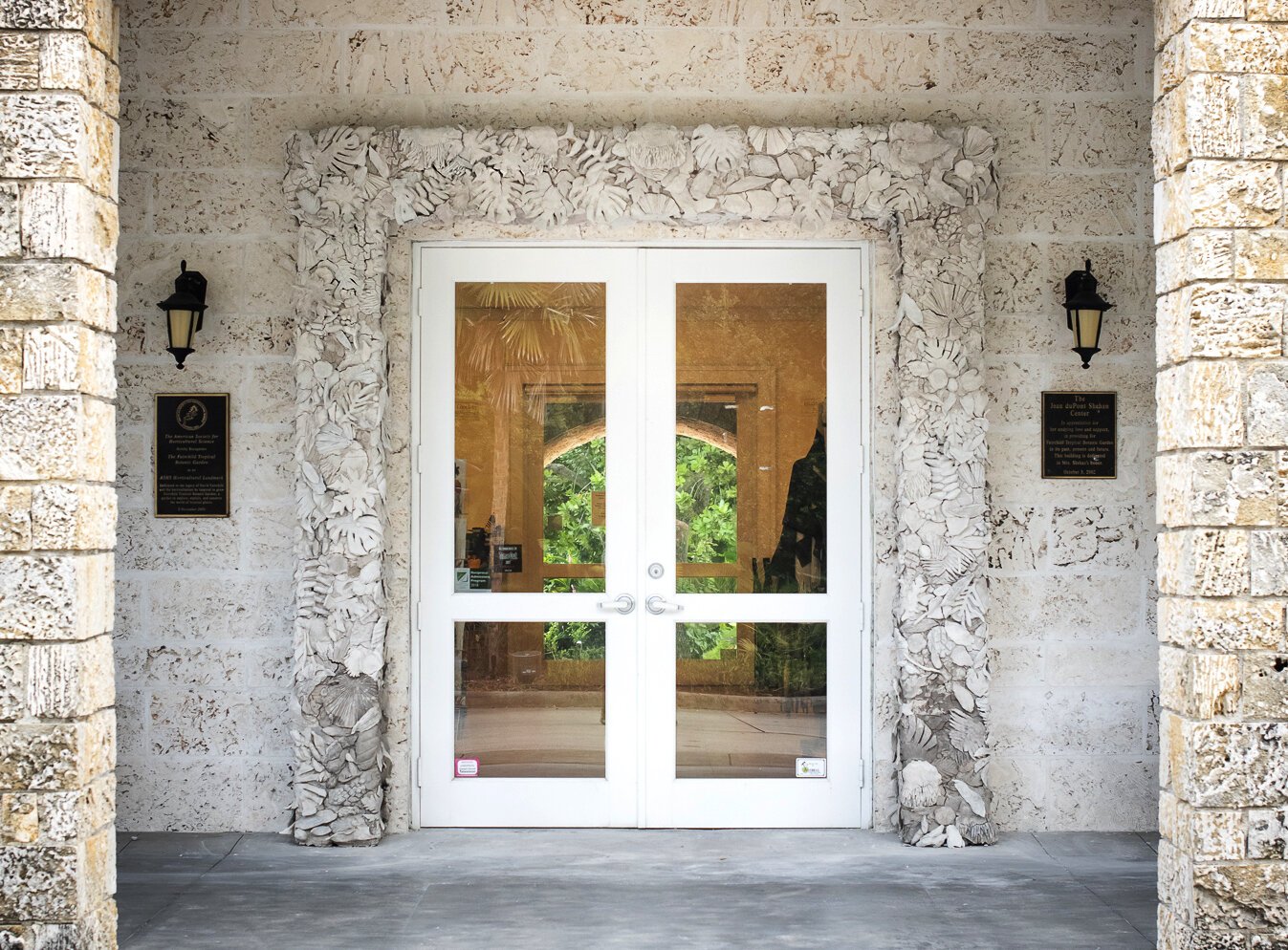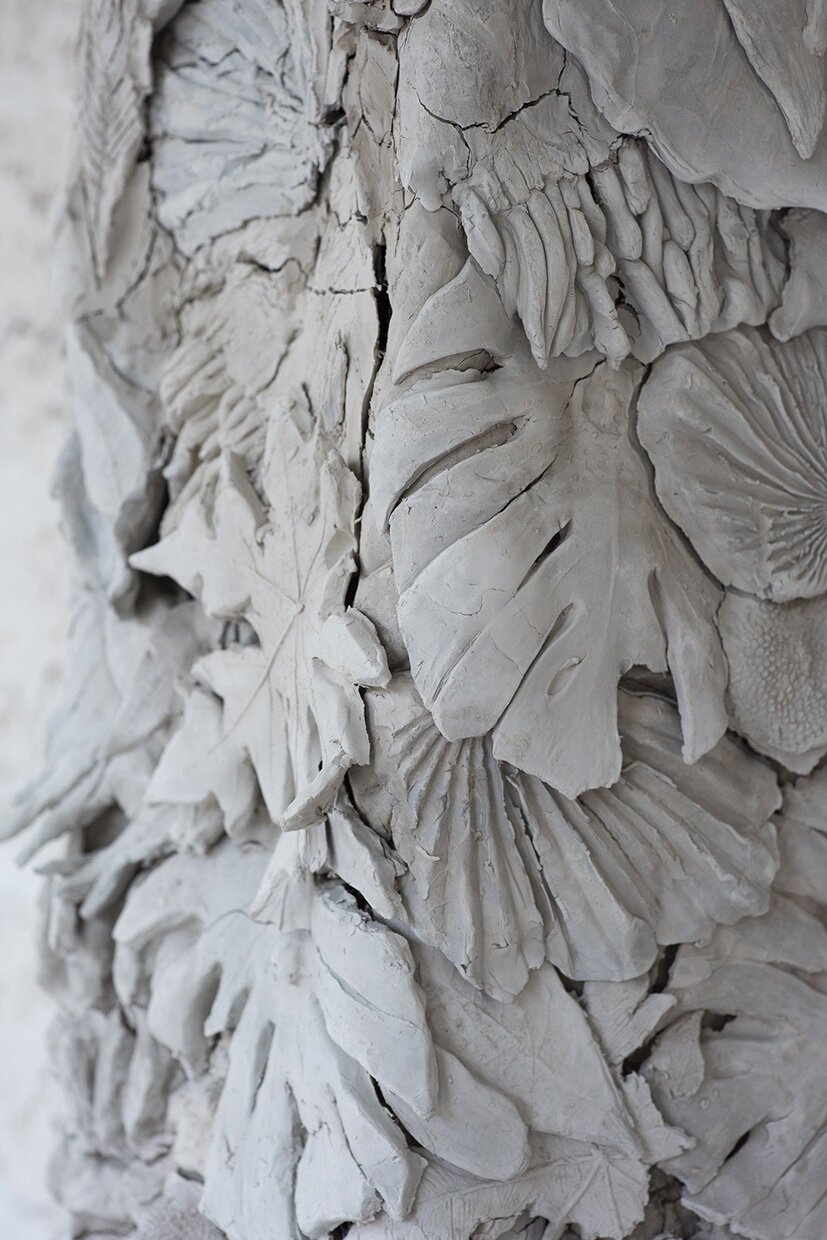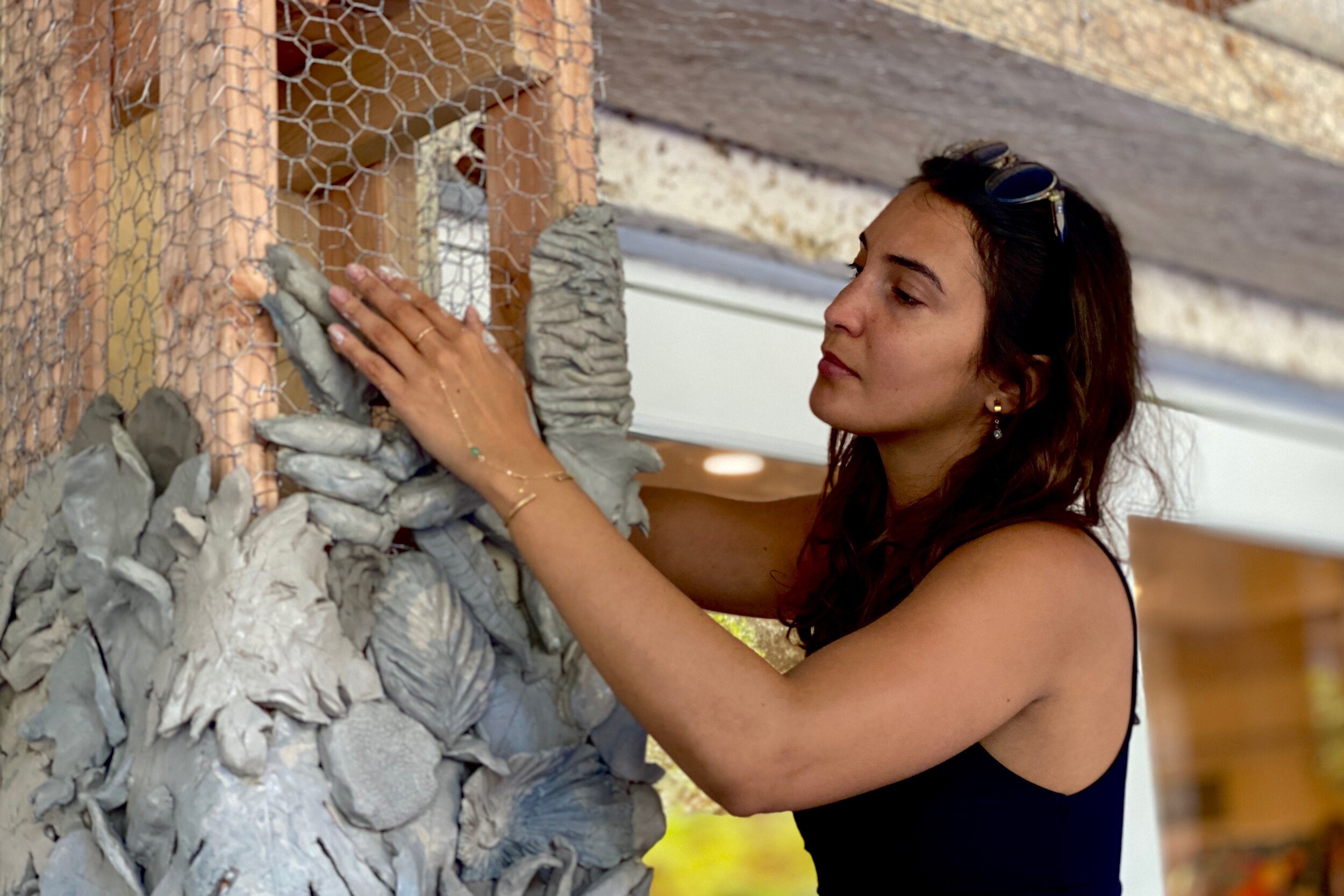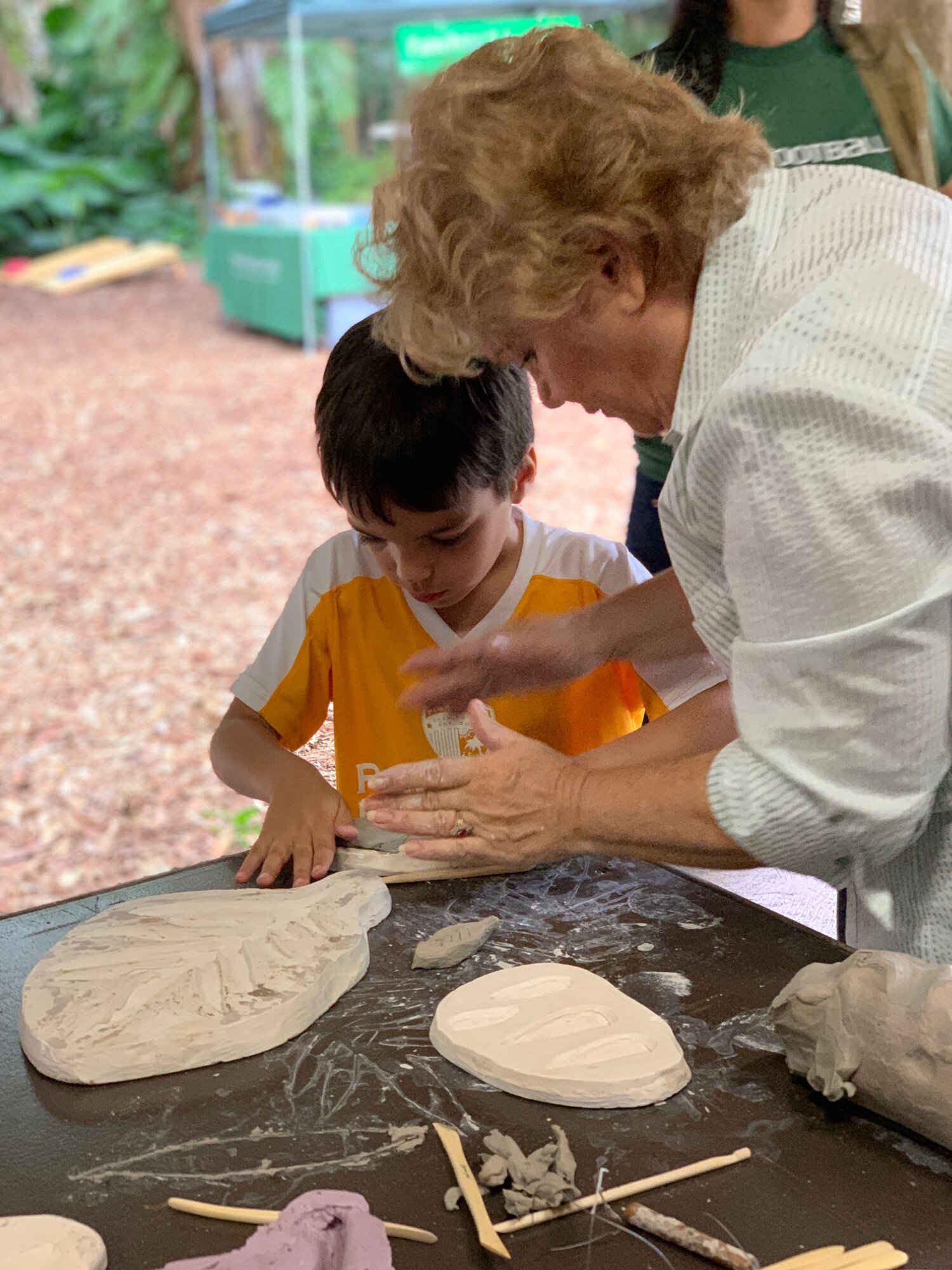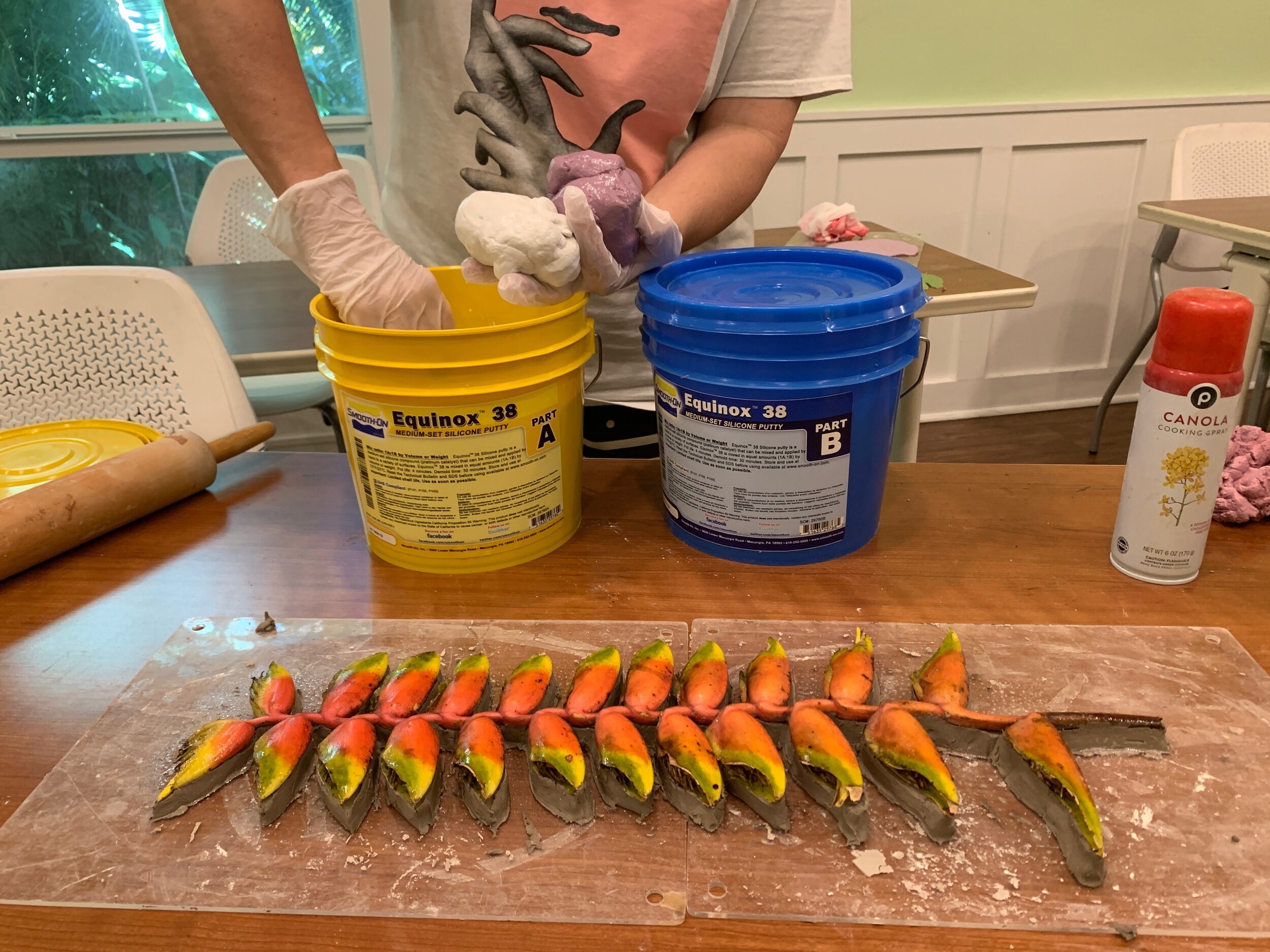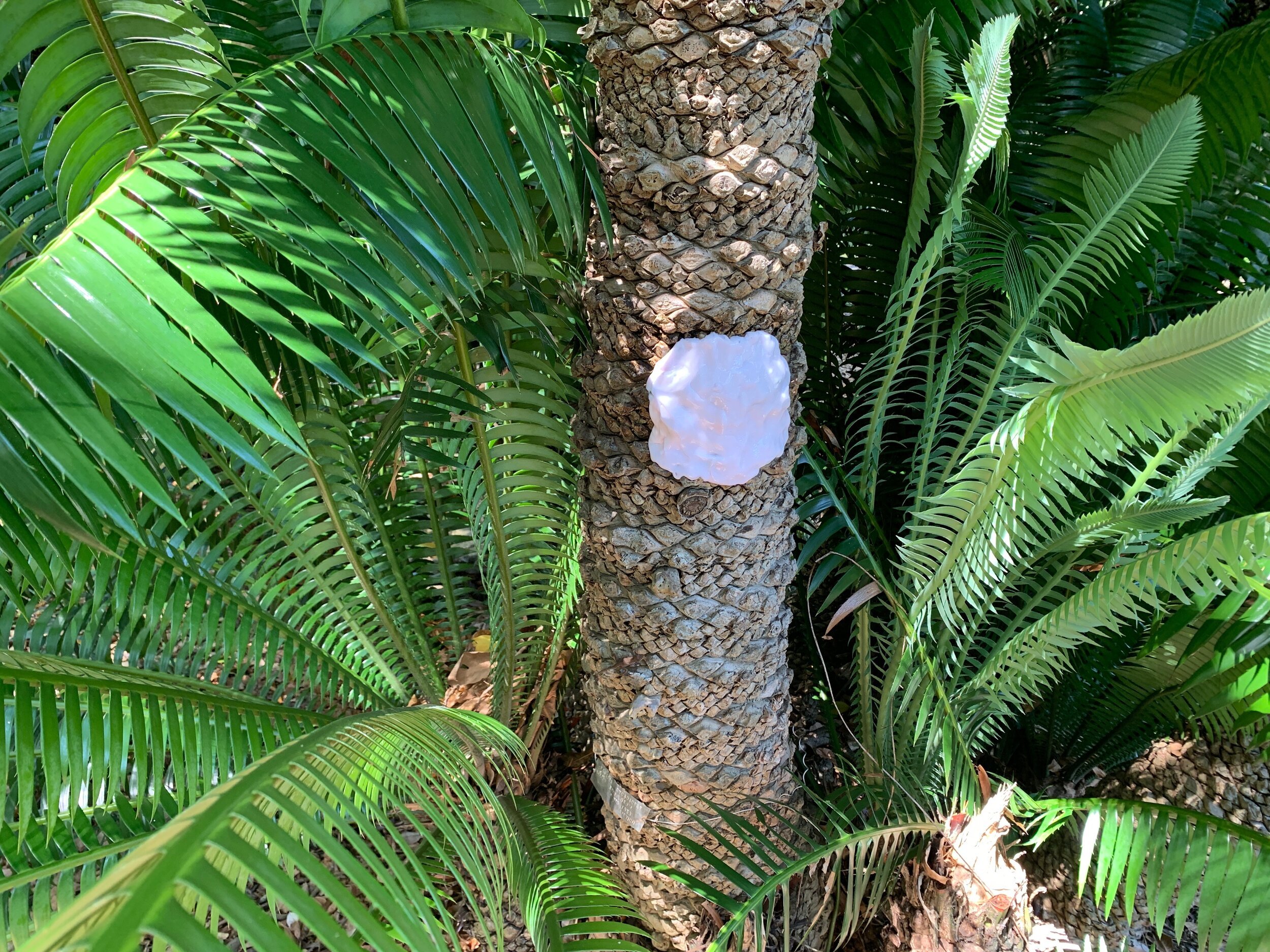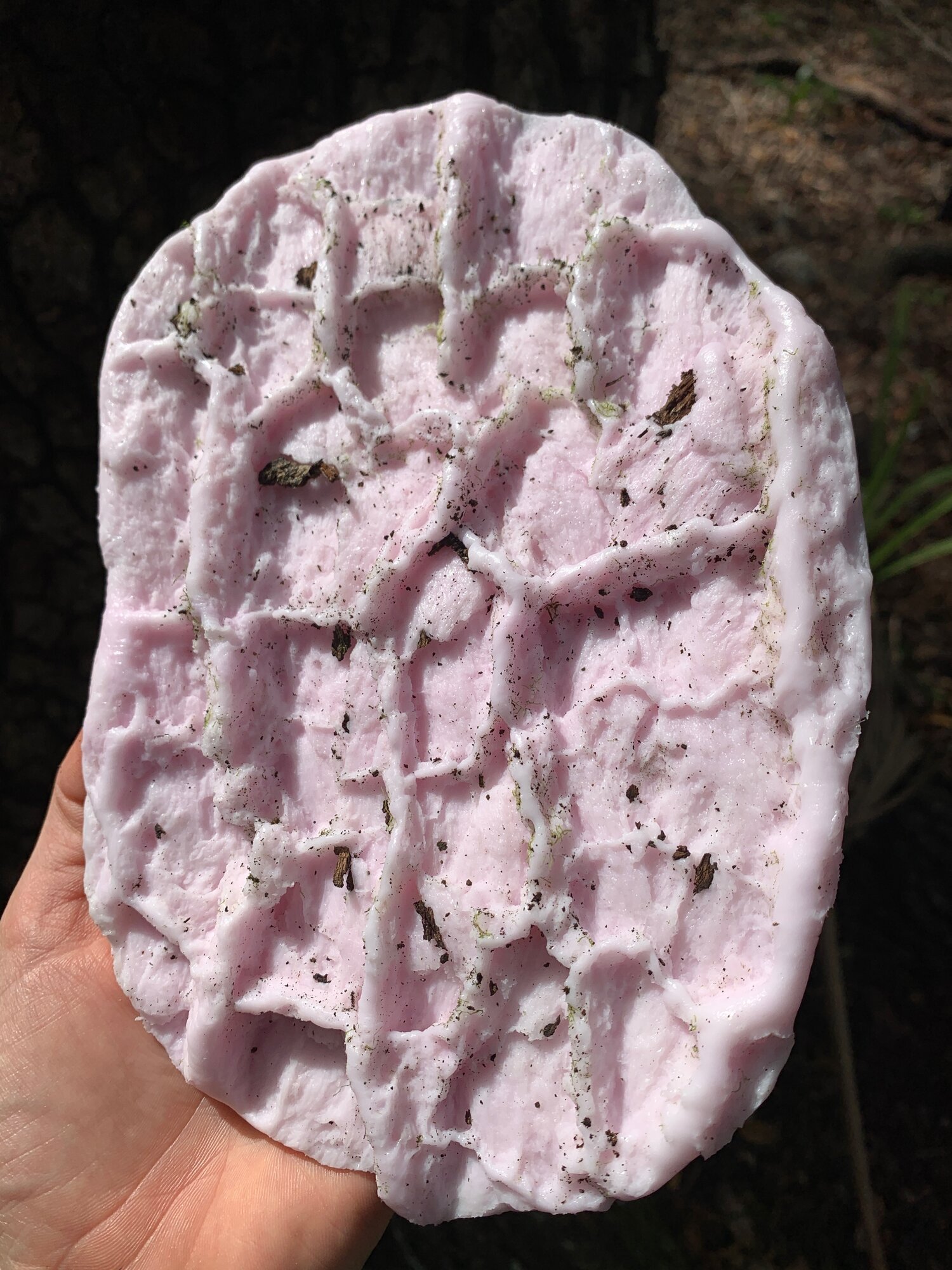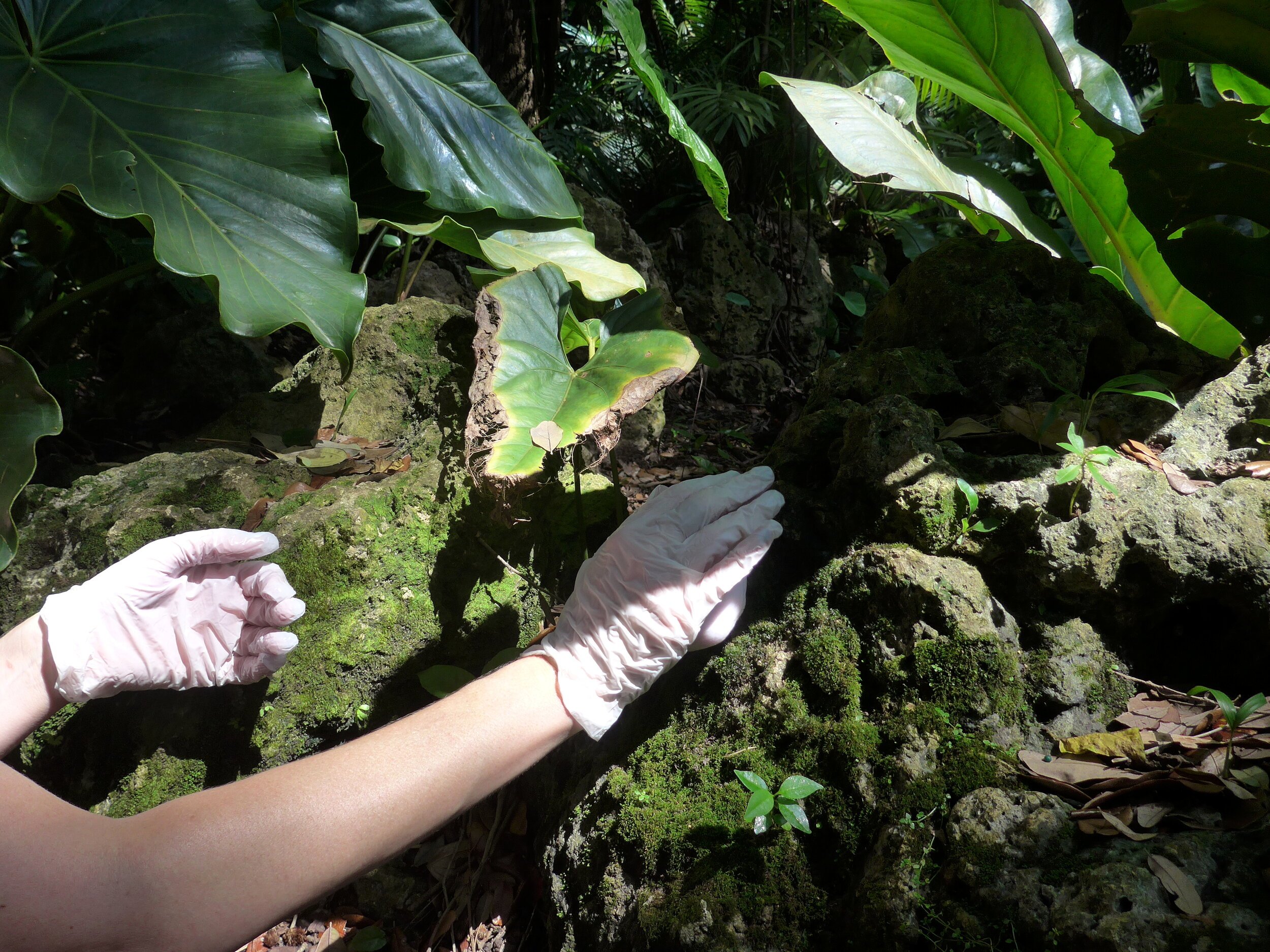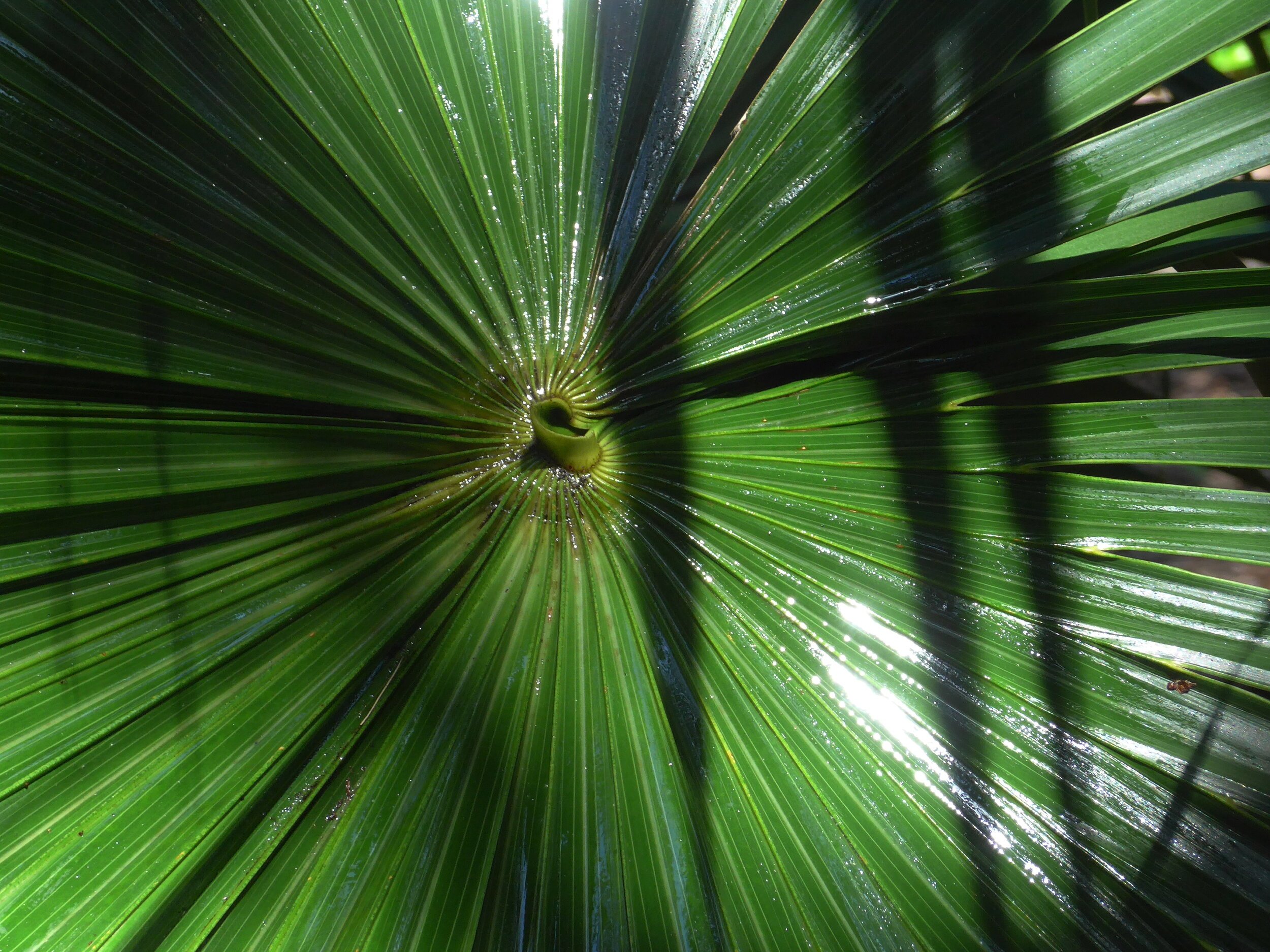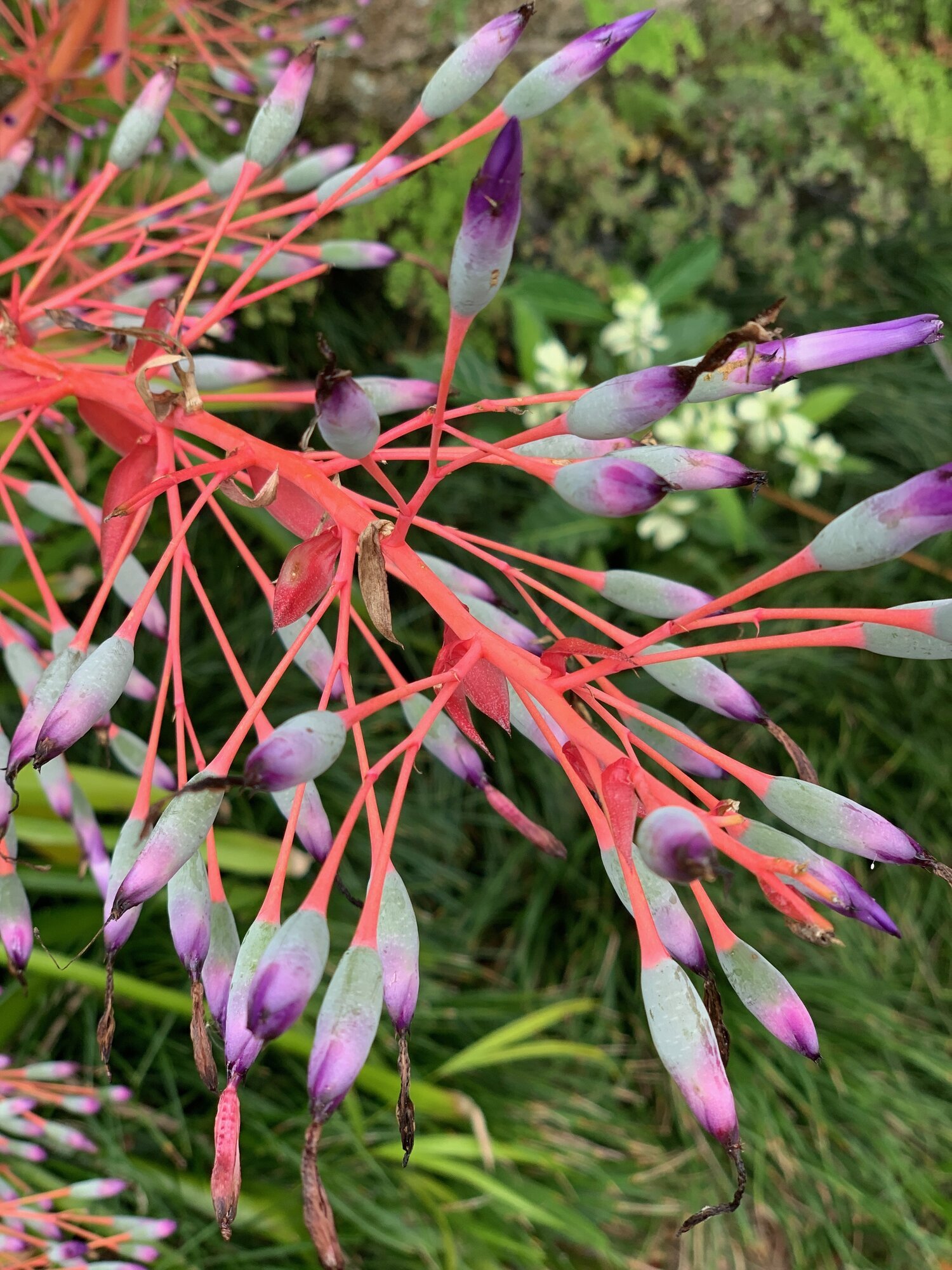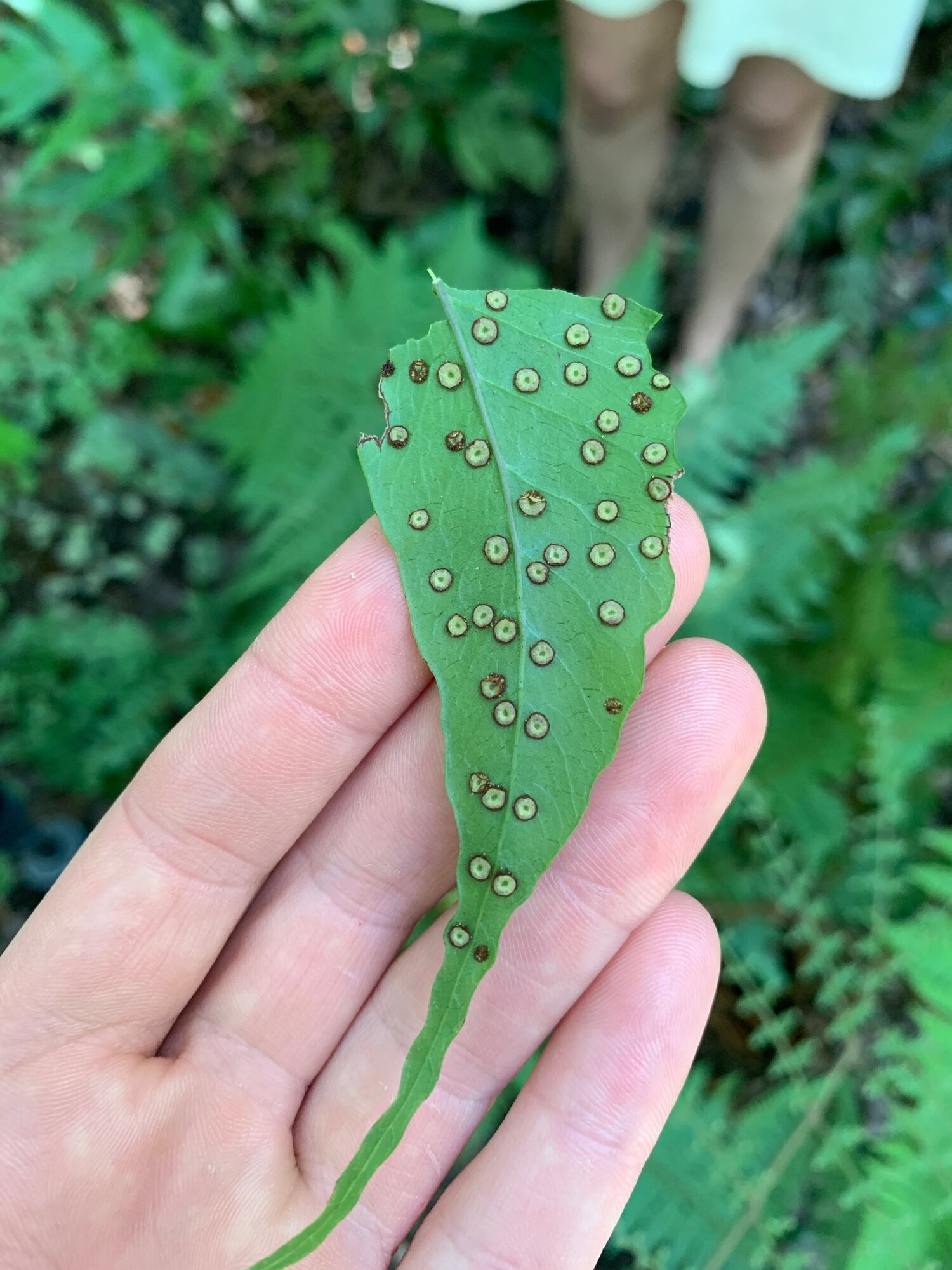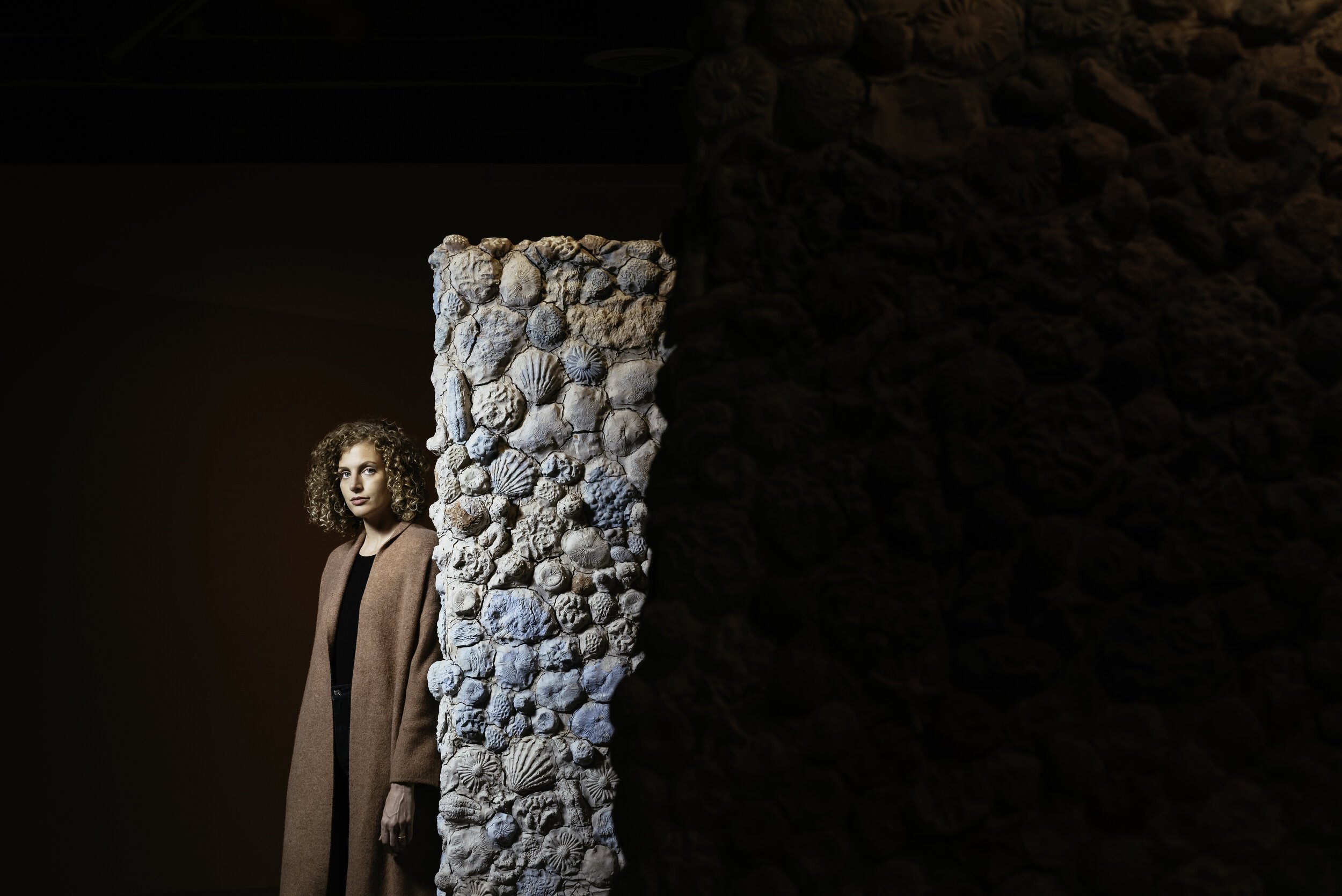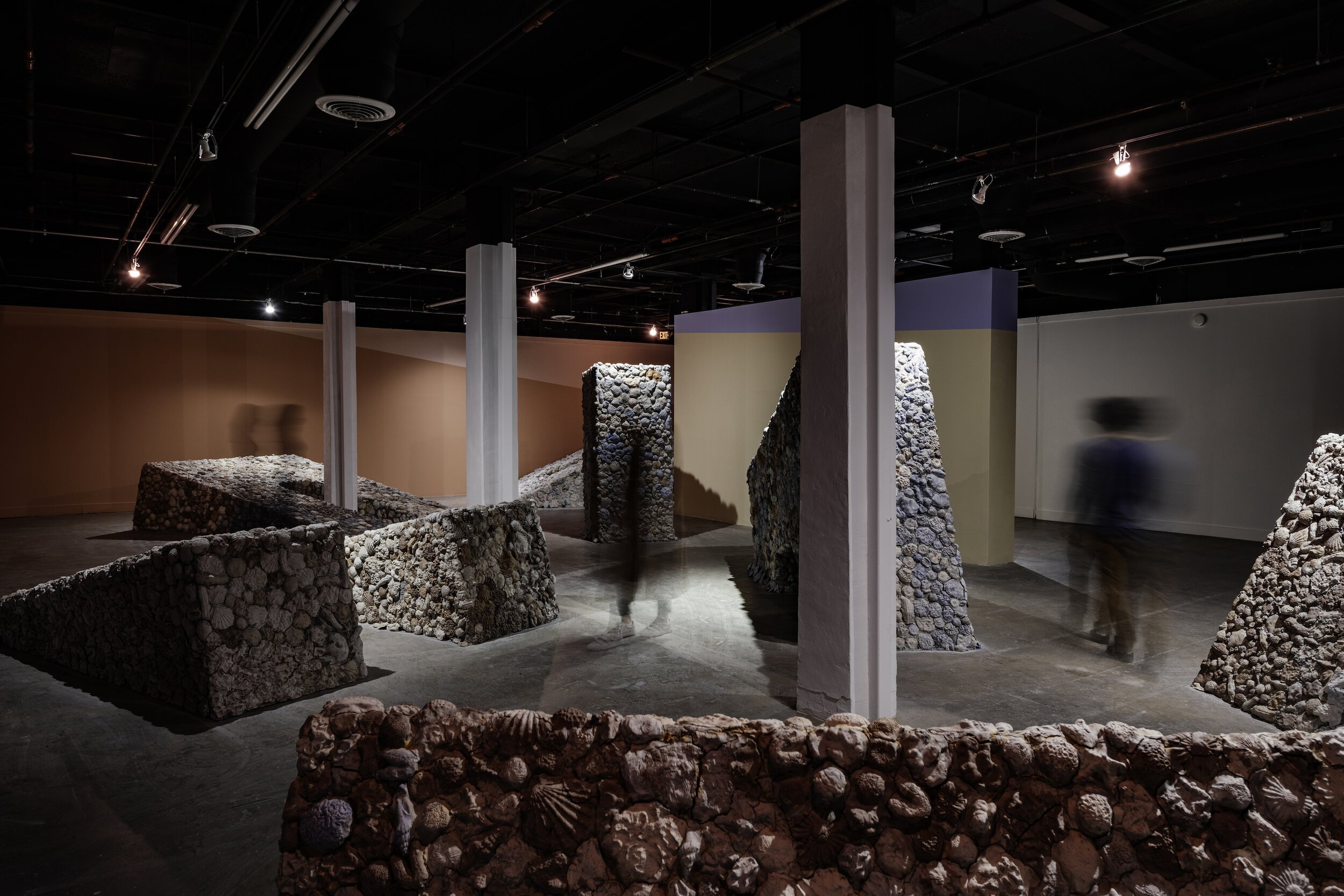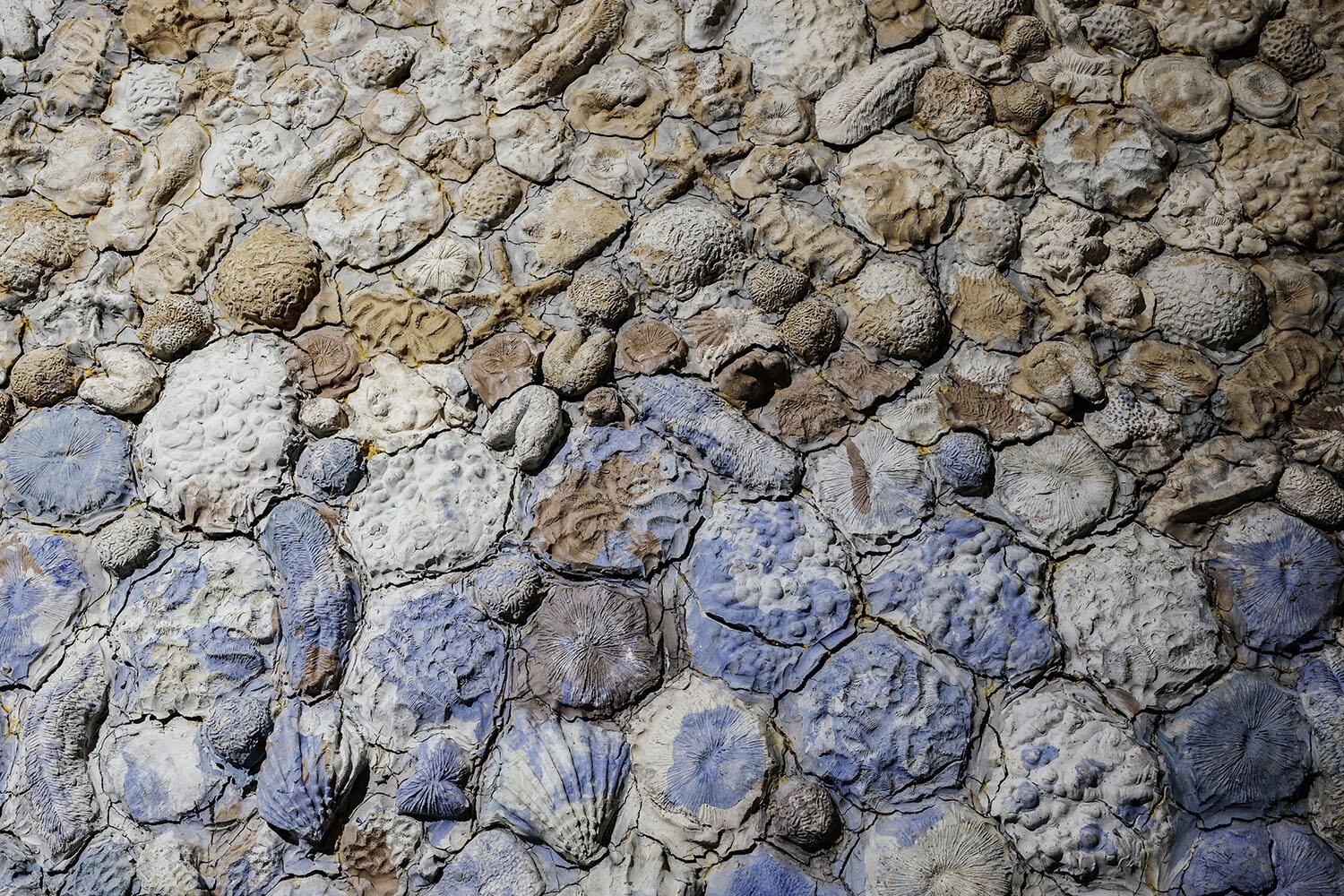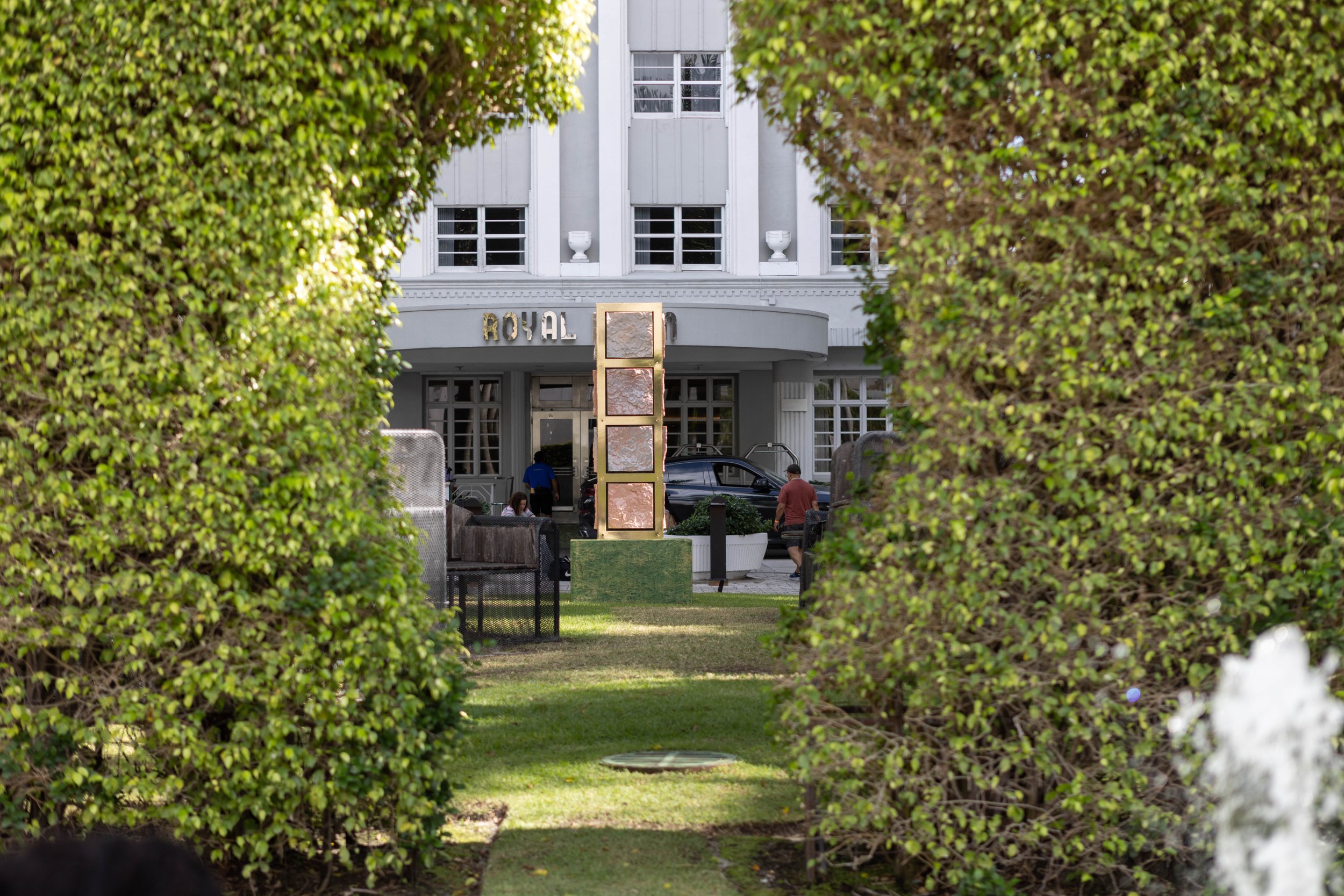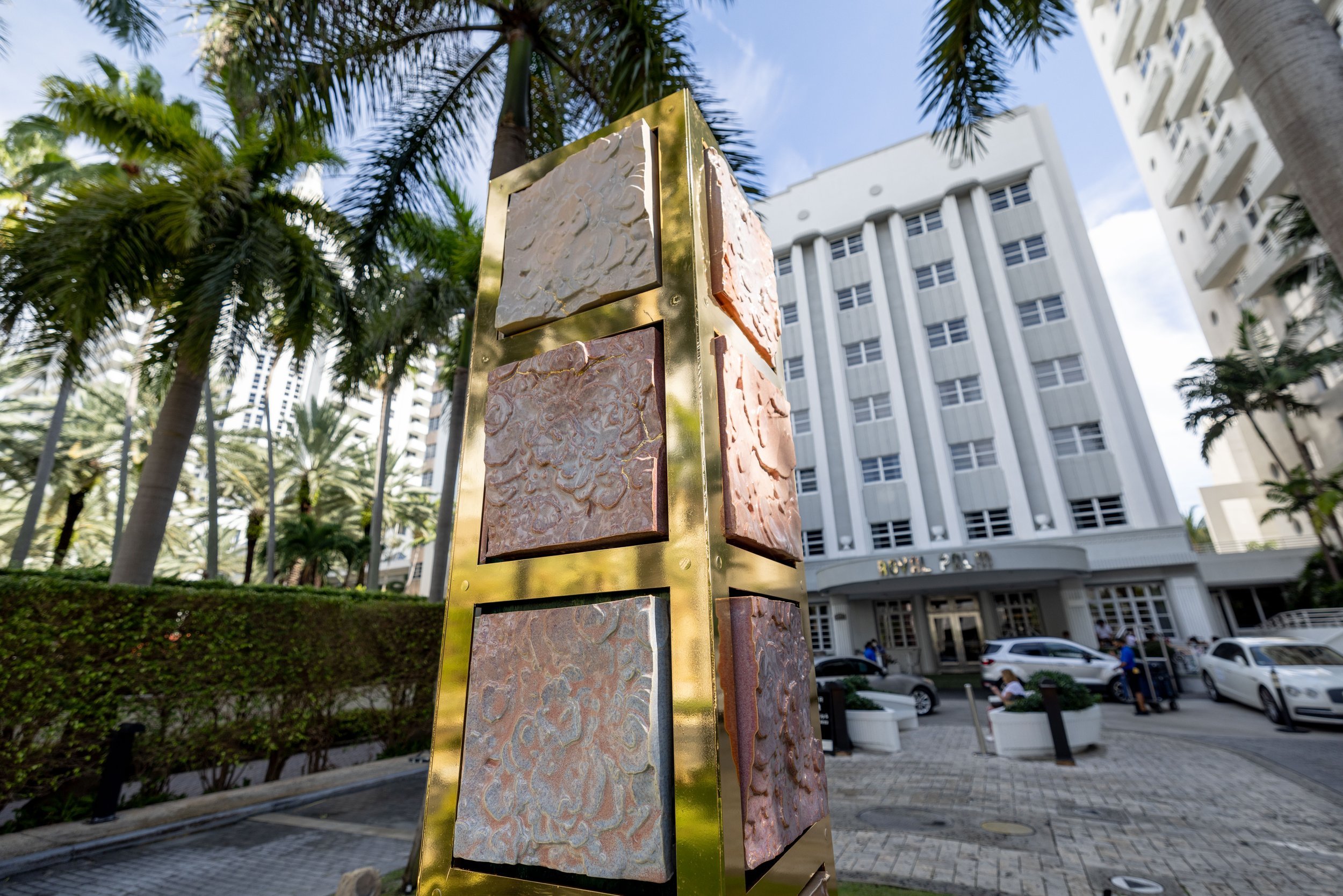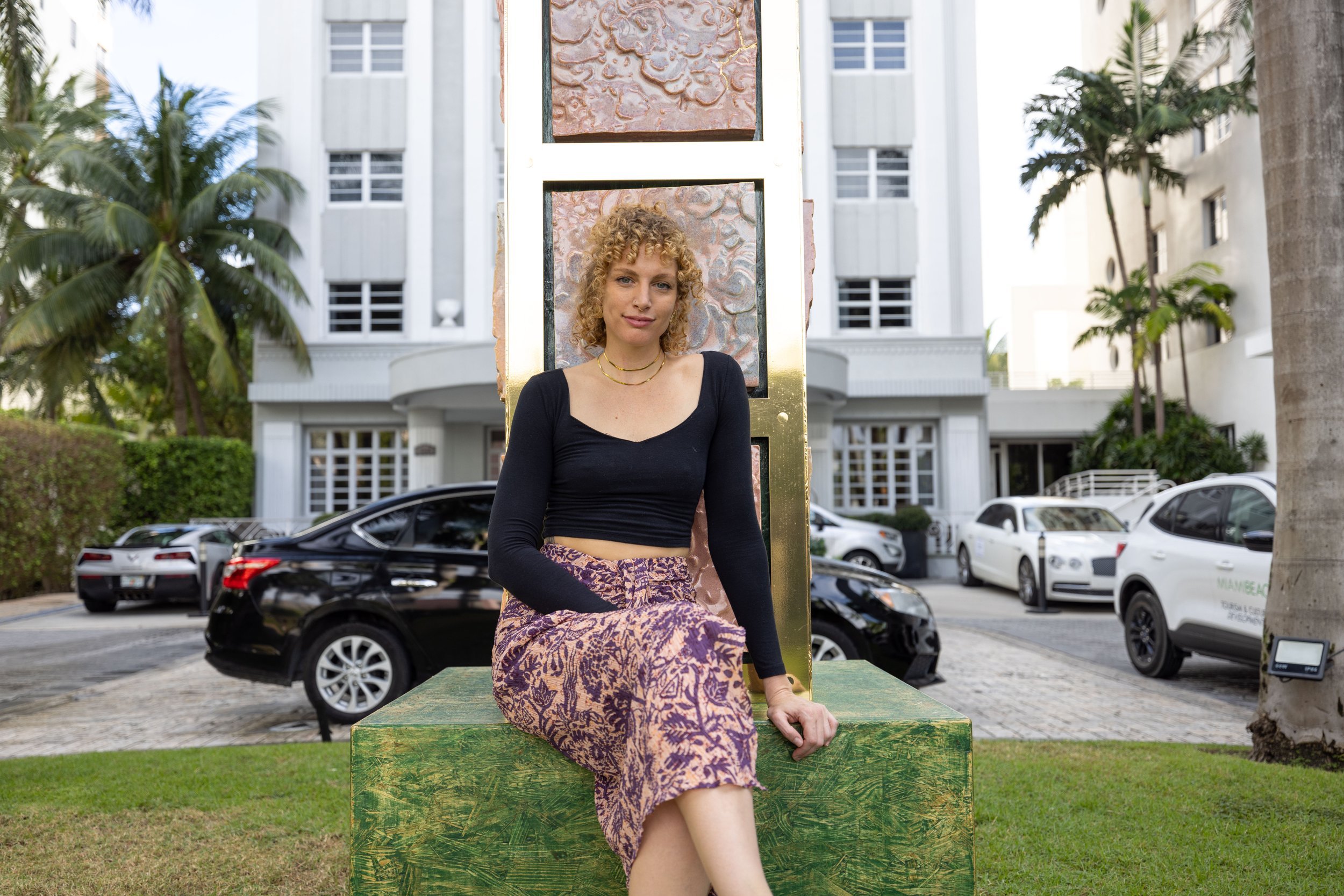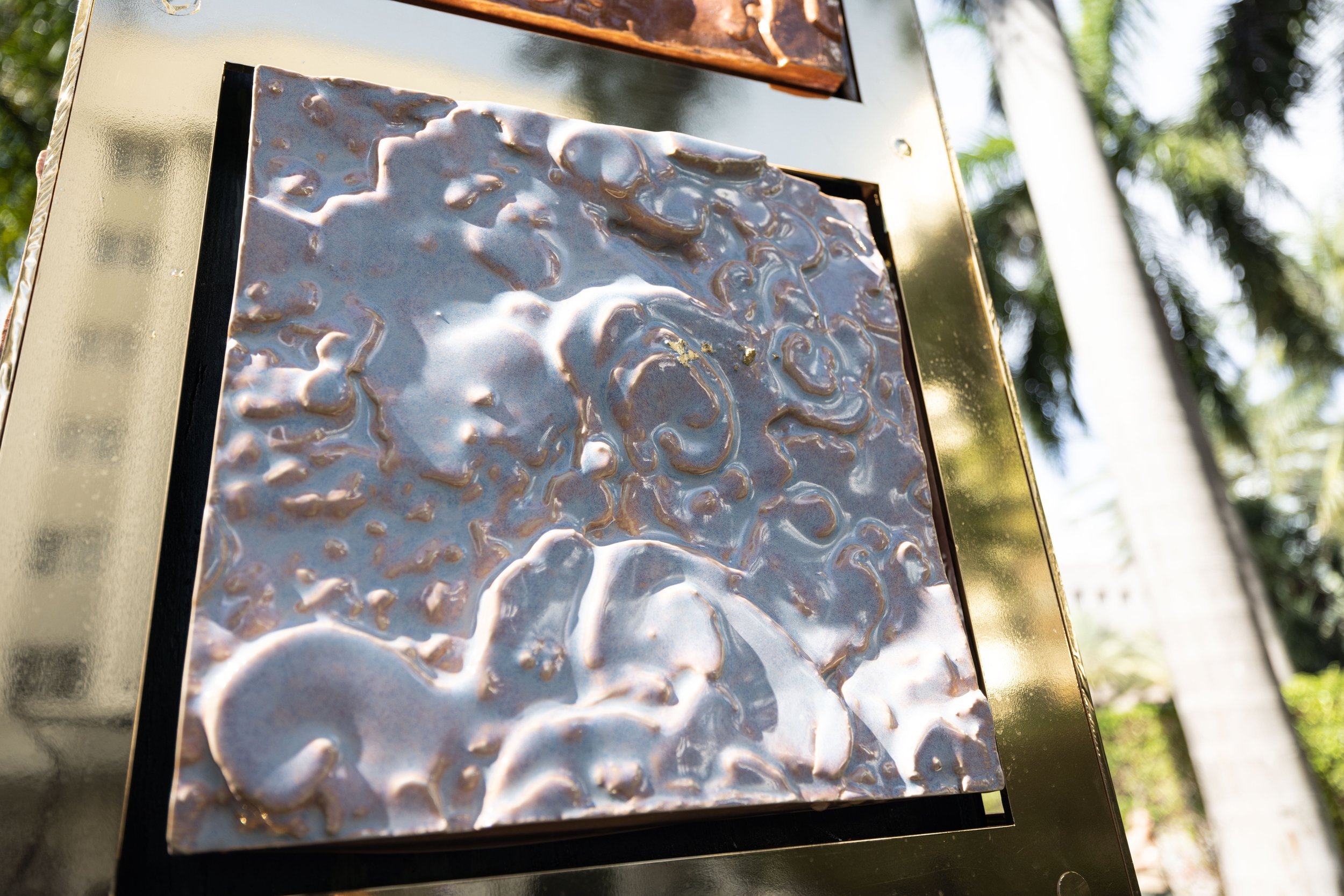Episode 6: Lauren Shapiro on collaborating with scientists, technology in art, & inspiring environmental stewardship
For Episode 6 of The Heart Gallery Podcast, Rebeka Ryvola de Kremer talks to artist Lauren Shapiro.
Lauren has spent her whole life in Southern Florida and her work explores the potential of art to cultivate awareness of the environment. She often works alongside ecologists to understand and narrate nature and she merges craft, science and technology to document disappearing ecosystems like coral reefs and mangroves with sculptural ceramic archives. Lauren talks about art as a tool for environmental stewardship in Miami and South Florida, how the enchanting and dangerously threatened Southern Florida ecosystems can be supported by art, science, and tech collaborations, and how the power of art can spark change on today's climate and environmental issues. Listen to learn from the captivating Lauren Shapiro.
The podcast transcript is available below.
HW from Lauren: "There is a book called "Draw It With Your Eyes Closed: The Art of the Art Assignment", it's written by artists for artists, but it can also be for anybody. It's a hilarious book. I would recommend reading that book. Each artist gives you an assignment, which go from practical to ridiculous. It's great for anyone who wants to spark their creativity or feels stuck. Again, whether you're an artist or not. It's a great way to kind of think about the world and do something silly."
See the work of Lauren's mentioned artists: Anne Hamilton, Daniel Rozin, & Rafael Lozano-Hemmer.
Collaborators mentioned: Read more about Nyssa Silbiger, Lauren’s long-time scientist collaborator, and Shireen Rahmini, the interdisciplinary marine anthropologist and filmmaker.
Lauren’s website | Connect with us @laurenshapiro & @rebekaryvola.
Thank you Samuel Cunningham for podcast editing.
Thank you Cosmo Sheldrake for use of his song Pelicans We.
Podcast art by Rebeka Ryvola de Kremer.
And be sure to read about & view Lauren’s three pivotal pieces below…
3 heart moves with Lauren Shapiro:
To provide a visual accompaniment to your listening of The Heart Gallery Podcast Episode 6, here are 3 pieces of Lauren’s that are significant to her life, perspectives, and career. All photos courtesy of the artist.
#1: Temporary Terrains. 2019.
“The first work I want to share is Temporary Terrains, which took place at Fairchilds Botanic Garden. This was the first grant I ever won and it was an opportunity to network with scientists that work in the gardens. I got to learn about all the different kinds of flora there, which was incredible. It wasn’t my first community produced project, but it was the first one where I had a proper platform.”
#2: Future Pacific. 2020-2021.
“This was the massive installation. 15,000 pounds of clay. It taught me about coral reefs and gave me access to a whole other world. This was the start of my ongoing coral reef explorations.”
#3: Site R16 Transect 1. 2021.
“This was my first exploration into using technology. There had been some others, like the garden portals work that used digital fabrication technology, but this was the first time that I was representing data in a ceramic form. I had received a grant that served as seed money, and then another grant, to be able to produce it on the beach. It had to be produced within 3 months, which was harrowing. But it all paid off in the end.”
Podcast transcript:
Note: Transcripts are generated in collaboration with Youtube video captioning and ChatGP3 and are not extensively edited.
[Music]
Hello and welcome to episode 6 of the Heart gallery podcast, with me, Rebeka Ryvola de Kremer. I am an artist, creative advisor, and visual communicator, and I’ve worked primarily with climate and humanitarian organizations for the last decade. I also have a personal art practice where I explore relationships between individuals, other living beings, and our planet. I created this podcast to inquire into the various roles that art can play in helping us create deeper connections with our surroundings and others.
Living in the US, studying environmental management in a US grad school, and working in climate policy spaces here for over 12 years, I've long been aware of Miami being one of the cities considered to be on the frontlines of climate change. It's a captivating mythology of a city so vulnerable, yet doing so little in the way of awareness, action, and leadership. According to the Southeast Florida Regional Climate Change Compact by 2040, South Florida's sea level is projected to rise 10 to 17 inches above year 2000 sea level, and by 2070, sea level is projected to rise 21 to 54 inches above year 2000 sea level. Putting this in perspective, this would mean that by 2100 we could see displacement of around 800,000, or 1/3 of the Miami-Dade county population. And that's not even accounting for the rising threat of increasing severe hurricanes.
Yet, the Miami region has some of the fastest growing coastal development, and, as discussed with Morel Doucet in last week's episode, the area is also on the frontlines of climate gentrification, as the wealthy are also increasingly displacing low income communities farther inland and on higher ground. And that's to say nothing of the ecological challenges facing the area.
To learn more about those issues, this week I talk to another Miami-based artist, Lauren Shapiro for part 2 of the two-part Miami Heart Gallery series. Lauren has spent her whole life in Southern Florida. Her work explores the potential of art to affect change and cultivate awareness of the environment. She often works alongside ecologists to understand and narrate nature and she merges craft, science and technology to document disappearing ecosystems like coral reefs and mangroves with sculptural ceramic archives. Lauren has received awards from the Andy Warhol Foundation for the Visual Arts, the Knight Foundation, Miami-Dade County Department of Cultural Affairs and many others, and is currently artist-in-residence for a National Science Foundation grant awarded to marine ecologists from California State University.
Lauren and I talk about art as a tool for environmental stewardship in Miami and South Florida, how the enchanting and dangerously threatened Southern Florida ecosystems can be supported by art, science, and tech collaborations, and how the power of art can spark change on today's climate and environmental issues. I hope you enjoy.
[Music]
R: Hi Lauren, hi! It's so nice to be here with you.
L: It's nice for you to be here with me.
R: Oh my goodness, I feel like my heart is racing a little bit because we just had like the craziest flurry of activity here trying to set up the sound. I was on my hands and knees under a printing press, which you shouldn't be. It's good you gotta stay mobile during pregnancy. But I wanted to start the podcast even though we had a really lovely conversation right now, and you shared a lot about different pieces of what you're working on, which we will get into in the podcast. One thing that we haven't touched on yet is your early life here in South Florida. And I was looking online on your website and other interviews that you've given, trying to understand your early relationship with the ecology of this place. I've only just started to get a sense of just the incredible flora and fauna of the area, and this is the subject of a lot of what you're working on. Can you tell me, as vividly as you feel called to do, how you came to have this relationship with your environment?
L: Sure. So I was born and raised in South Florida. And I'm actually, on my mother's side, I'm a third-generation Floridian, which a lot of people down here are not. Florida is a very young place. You know, it wasn't really occupied by basically the northern people, like North American people, until the early 1900s. Obviously, there's a long history of Native American population here. A lot of that history goes back thousands and thousands of years. But my grandparents were born in Palm Beach, West Palm Beach.
So my people talk about a cultural identity, right? My identity - I'm Jewish on one half, and then, like, my mother's side, they settled in the United States in the early 1700s in the South. So we're basically, like, a European cocktail. But because I've had such a long three generations of people here in South Florida, I feel like my identity is Floridian, which is kind of weird to say.
Florida is such a unique, interesting place in that Miami is completely different from the middle of Florida, from Northern Florida, and all the way up and down. But I was raised in South Florida, Broward County area. And what really introduced me to the nature of this place was - a fun nerdy fact about me is that i was in girl guides.
R: Me too, for 10 years.
L: Oh were you a Brownie before as well, and a Spark?
R: Yeah, and uh, Spark. I think this is... I grew up in Canada. It was Sparks, Brownies, Girl Guides, and then there was something like an eagle.
L: Yeah, it's a little different now, but I think what held it together was all of the parents were good friends, and a lot of their kids. I lived in Coral Springs, which is sort of like a suburb that butts up against the Everglades. So, Coral Springs is like suburb Flats, a lot of car dealerships, a lot of Publix's, a lot of like, very, very sparse, very depressing for an artist, anyway. And then there's a highway, and then on the other side of the highway is this just massive, expansive Everglades. So, there was almost like a barrier between the natural and then where I grew up.
R: Can you just share what the Everglades are?
L: Sure, for people who have never been sure. The Everglades is very unique to the world. It's basically... I guess it's sort of like a swamp. So, most of Florida used to be... it's sort of like water and marsh. There are a lot of different types of ecology in Florida. There's hardwood hammock, there's pine Rocklin, which is very dry, it has a lot of pine. Basically, all of Florida is built on top of a dead coral reef, so there's caves and water systems. So, as the oceans go in, the waters flow into the Everglades, and as the oceans flow out, the water flows out of the Everglades. So, the water is constantly rising and falling, and there's such a rich ecosystem of animals that are specific to this place, including the Florida Panther, being one of them. It's like some of the last of the puma in North America has been sort of forced down into the Everglades. What used to be the entire, almost the entire state, is now a tiny, tiny patch of land that's a national park.
So, it's a very small little bubble of this really special ecology that's unique to Florida. So, if you visit Florida, you can probably do airboat rides, you can get on... For those of you who don't know what an airboat is, you get onto a boat with a giant fan strapped to the back of it, and it blows over a river of Grass. They call Everglades River of Grass, right? So, it looks like a prairie of just grass, but underneath, there's water, and in the water is alligators, birds, fish, different types of mammals that go in and out with the tides. So, they're kind of like... I don't want to say lungs, because the rainforest is the lungs of the world, but it is like the heart of Florida, and it's just a special type of ecology. It's also a really unique place where plants that would normally grow in the north kind of overlap. There's like these overlapping sort of circles of ecology here. There's plants that have been brought here from South America, from the Caribbean. A lot of them have been brought here, but the native plants and animals here are typically only found in south Florida.
Okay, going back to my childhood, a lot of the children in the troop grew up in Boca Raton, which is sort of a bougie kind of suburb in South Florida. I think the parents really wanted the kids to be out in nature, like, get out of the house and get into nature. A lot of the parents were big nature buffs, and so we would do a lot of camping trips. We camped up and down and all throughout the entire state. So we went to Nocatee, we went to Central Florida. We didn't actually come down to the Everglades much because I think they're all afraid of mosquitoes and they hate it. But Florida has incredible natural springs.
There are actually caves in the northern part of Florida and just incredible, incredible nature. So we spent a lot of time learning how to make fires. And I remember one activity...I don't know if you know about Girl Scouts, but I'm sure you know, but for our listeners, you earn badges which are earned by completing certain activities, and there are nature ones you can do. Like, we earned a canoeing badge.
We did a nightmare canoeing trip where everyone got separated. I think we were like 10 years old, in your own canoes, and we trained, you know, in a lake and earned the badge. And then I think the parents took us on a really advanced canoe trail by accident. Everybody...all the rivers separated into feeder rivers, but they all came out at the end in the same place, so everyone got separated.
R: Yeah.
L: And I remember they gave us these whistles that you had to blow if you got lost, so all you hear is like frightened girls blowing whistles in these sort of channels, right, because you're in these…
R: right, it's like passageways, right?
L: Right, right, exactly. But really easy to get lost, but they all ended up in the same place, so that was our harrowing canoe trip. I think they never did canoeing again.
R: Did you ever do canoeing again?
L: I love to canoe. I, of course, do. But at the time, like, 10 years old, it was terrible.
R: I think the parents that were going…So does that mean that your parents are lovers of nature?
L: My mom, yeah, my mom would do it a lot. She's obsessed with camping and all of that stuff. So we...another activity we did where we did a lot of beach cleanups. That was always like a really big thing. We did an activity where they would have us put socks on the outside of our shoes and walk through the woods and then pick all the seeds off to identify the plants.
R: Oh, that's so nice.
L: At the time, they seemed cheesy, but it wasn't until much later, like, maybe five years ago, that I realized how much those experiences influenced the work that I do. And actually, one of my biggest projects, which we'll get into...Future Pacific, which is about the decline of coral reef ecosystems, the scientist that I collaborated with, Nyssa Silbiger, she's a professor at California State University in Northridge. Her mom was the troop leader. So we've known each other for 25 years.
R: How did you start collaborating with scientists, because Future Pacific is one piece of yours, but you also worked on a project in the Amazon, right, and then there was this incredible Temporary Terrains ceramic project.. then there’s the Site R16 Transect 1 project.
L: Right, Site R16 Transect 1, which describes a location of a scan of a coral reef.
R: Exactly that one's so fascinating, I can't wait to talk about that. But all of these, I mean, these are just, these are just a few of the ones. Um, the projects are projects that you've worked on in collaboration in different ways with scientists, right?
L: So I think obviously the Girl Scouts and those formative years of learning about the environment sparked that, and Nyssa is one of them, her mother was a troop leader, so she did it probably longer than I did. But that biggest collaboration I've done with scientists specifically, like one scientist is Nyssa and she's my ongoing collaborator.
So we're both from the same troop, so that's kind of the connection point. Prior to that, I applied to a residency in the Amazon rainforest in Brazil, and I was accepted. So they brought, I think, 15 artists from all over the world. The residency is called Labverde. I'm gonna butcher the name because I don't speak fluent Portuguese, but in English it sounds like labverde. And it's in Manaus.
And so basically, they brought us out there for a 10-day excursion to experience the Amazon. And they brought in scientists and other specialists to basically lecture us about how the planet is doomed. Um, some of them are really great, some of them are really depressing, um, just basically giving us data. And from that initial experience, uh, some scientists realize that for an artist listening to data, graphs and charts, can be very boring. And I know a lot of that gets lost on the public.
So it led me to try to think about how I could basically take this information that I was learning and turn it into something that's going to spark people's curiosity or emotion.
R: Incredible. And that's one of the, I mean, that's the role I see art playing most often in this translator role when there's an art science collaboration. And I wonder if in this Amazon project or maybe some of these other ones, did you see the reverse happen, where the art was supporting the scientist side of the equation?
L: Not so much in the Amazon, but definitely with Dr. Nyssa Silbiger and the projects that we've done, yeah. That usually I was thinking about it as like artists in the Amazon goes out to the field site and learns from the scientists and goes back to the studio. But, you know, thinking about a residency where a scientist comes to the studio and makes art and maybe that would change the way that they pursue their research.
R: Have you been a part of any initiative like that?
L: Well, with Nyssa.
R: But have you got any testimonials from her? Do you have a sense of how it has shaped her perspectives or how she approaches her area of study?
L: We've definitely talked about it, and I think for her, what we've both talked about and what we've both noticed is that artists love to break rules and think outside of the box, whereas scientists are very thorough with their research. They record everything, and you know, Nyssa is a total academic.
I have an academic background. I have a master's degree, and I've been through the institution of art school, so I understand that. But I've never really been a very good student. I'm a great artist, not a great student. I have a hard time with rules and following the student protocols. It’s not that I don't like or don't respect the institution, it's more like if I have an idea and if it goes against the typical rules, I'm going to pursue that idea. And that's just the curse and blessing of being an artist.
So for Nyssa, I think it causes her to think outside of the box a little bit. She's learned a lot about contemporary art because before she's like, "I'm not an artist, here's my stick figure drawing," right? Yeah, like you think of art as someone with an easel. But working with me and working with our collaborator Shireen Rahimi, who is a filmmaker and a marine anthropologist, and just listening to our conversations and our collaborations, she has such a greater idea of what art can be and that it doesn't have to just be a drawing.
So it's opened up her mind in that way, and for me, it's given my work and research more access to her mind and why she does what she does. And the privilege of being able to go out to these sites that are very limited to tourists and be able to experience them. With the Amazon, we were taken to these research sites that only scientists get to go. I just think Art and Science is such a great way to collaborate. We both are very, very similar in many ways.
R: And so to go back in time, at this, you see, you were canoeing, getting lost, didn't turn you off of nature. That was the origin of your connection to your natural environment, yes? And then where did the art piece come in?
L: So I had two talents, two of my special talents as a child. One was singing and performing, and the other was art. And I pursued singing and acting up until about age 12. I was doing a lot of Broadway sort of school performances, and another nerdy fun fact about me, I was in the choir. And then around like age 11 or 12, I decided I didn't want to be on stage anymore, as most young girls when they're going through that phase of their life might do, and I wanted to just express myself through my artwork. So I could just make art and kind of stand behind it. Ironically that's not how the Art World works these days. Now, with your work, you have to be the face of your work, you sell your own work.
R: you do that so well I mean this is a side note but if you Google Lauren Shapiro you will see just a ton of incredible videos and interviews and photos where you're integrated into your artwork so you're doing a great job from where I'm standing.
L: I had to practice. It's like that's what we had talked about before it's not easy to listen to yourself or see yourself.
R: it's the worst, but I think it's actually really healthy it's good to desensitize yourself to yourself.
L: Right. Let go of judgment yeah.
R: and then you can iterate, too, you can get feedback from yourself.
L: Exactly. So I've learned a lot about filmmaking by doing that because I'm sort of co-producing these films with these filmmakers. I'm hiring them kind of as a commission if I have a grant or something to pay people to help capture a lot of the participatory works, which we'll get into. They’re involved in the creation as part of the artwork and so film has been super important in capturing that and also it's a way to Archive the work: it makes it live on. So by helping co-produce these films, like what shots do we want to get, what story do we want to tell, how do we want to present ourselves - this has taught me a lot about storytelling and filmmaking in general which has been really great.
R: you do that so well I mean this is a side note but if you Google Lauren Shapiro you will see just a ton of incredible videos and interviews and photos where you're integrated into your artwork so you're doing a great job from where I'm standing.
L: I had to practice. It's like that's what we had talked about before it's not easy to listen to yourself or see yourself.
R: it's the worst, but I think it's actually really healthy it's good to desensitize yourself to yourself.
L: Right. Let go of judgment yeah.
R: and then you can iterate, too, you can get feedback from yourself.
L: Exactly. So I've learned a lot about filmmaking by doing that because I'm sort of co-producing these films with these filmmakers. I'm hiring them kind of as a commission if I have a grant or something to pay people to help capture a lot of the participatory works, which we'll get into. They’re involved in the creation as part of the artwork and so film has been super important in capturing that and also it's a way to Archive the work: it makes it live on. So by helping co-produce these films, like what shots do we want to get, what story do we want to tell, how do we want to present ourselves - this has taught me a lot about storytelling and filmmaking in general which has been really great.
R: Okay. And so when you had this early teen years shift towards focusing on your art practice, what was your subject matter at that point?
L: My subject matter, like any great teenager, was bleeding eyeballs, right? Dragons, right? A lot of op art, right? Whatever they would teach us. I didn't go to an art school in high school. I went to a regular public school, so I was the one of the only ones. I had some talent, so I stood out. So, that was like... I was like the artist, the artist kid. I remember my first experience with clay, which I didn't get into until my college years. I never thought I was going to be a ceramist.
I always assumed I would draw or paint. I made a Giacometti-inspired sculpture. I don't know if you're familiar with the artist Giacometti, but he did these tall, sort of emaciated-looking bronze figures. They're surreal, and they're... I don't know why I was struck, maybe because I was really tall and skinny. I'm six feet tall, for people who don't realize that until they meet me. They're like, "Oh my God, you're so tall." People always ask me, "Did you get taller?" I'm like, "No, maybe you're shrinking”
R: They deserve that.
L: So, those early years, mostly like art school exercises and things. I kept a sketchbook. I have an archive of sketchbooks going back 20 years, which are interesting to see. I've thrown a few of them out because, in your teenage years, they're pretty dark, you know? Yeah, like, "I don't want to be remembered for this." But the sketchbook was where I lived mostly with my creative work. And then, in college, I went to Florida Atlantic University in Florida, the Sunshine State. It has a scholarship program where you get, I think, a majority of it subsidized.
So FAU actually has a great art program and that's where I found Ceramics by accident. I thought I would be a drawer - drawing and painting - so by the time I got through the first two years of my degree and it was time to study art, the only class that was open and available was Wheel. Pottery on the wheel, and so I was like, "I guess I'll try this," right? So I took one class and I was just like, "Wow, this is so cool," and I took another one and another one and started doing sculpture, and the next thing I knew I was 15 credits deep into a Ceramics major, and I was like, "Well, I guess I must keep going with it, yeah, yeah, I guess I'm a ceramic artist now."
R: And at that point when you were getting into Ceramics, were you exploring nature shapes forms, in your work?
L: My undergrad work, like most undergrad work, is bad. I say bad, but it's the typical, and I've taught College a lot. I've taught a lot of undergrads, so I see the same kind of like themes. But I was doing a lot of like hybrids of like people and animals. Like, I made an octopus head where the head was like they're horrifying, they're very scary looking octopus head, and like a mermaid dragon and like Whimsical kind of things like that, embarrassing things that I would never want anyone to see.
R: Do you still have them?
L: My mother has them, yes.
R: So, I guess anthropomorphizing nature, so um, blending people with animals, yes, exactly.
L: So that was kind of the connection, and then I was doing a lot of like uh tile carving and experimenting with colors and under glazes, very like more technical side. When you're learning the medium, Ceramics is hard. It's really fun and really rewarding, but it takes a long time and a lot of trial and error to like get the results that you want. And you need a kiln. So that's the thing that I think stops a lot of people from pursuing it. So I knew that in order to continue to do Ceramics, I either needed to find a ceramic artist to work alongside or teach where they had to kiln, and so that's what I did.
R: Okay, excellent. So, the love was born and then the practice continued into this direction where now, I think the majority of your work is based on nature, right?
L: Correct.
R: And so, when did that become the clear direction, the clear path that you're pursuing?
L: I would say after graduate school. So, after I finished my undergrad degree, it was about 2009, and I worked for several years in a studio with another ceramic artist, and I taught at the Museum, the local Museum. I taught at the art school with Ceramics. I was working a lot with children at the time, so my work was very whimsical and silly. But I wanted to be more serious, and I knew that in order to pursue art seriously, I needed to be in a city where there was a strong Contemporary Art presence, and at the time it was Miami. That was the closest city, so I applied to graduate school at the University of Miami. And, um, I got in with a full ride, woohoo! It was my Hail Mary.
R: That's excellent. Yeah, this freaking country and the cost of education... congratulations.
L: Yeah, so that was the only deal with myself. If I actually got in and didn't get the scholarship, but I was first on the waitlist and somebody dropped, so I slid into home base. It made it extra sweet.
In grad school, I wanted to be able to produce multiples. I was really interested in installation and I wanted to study mold making. And so that's what I did for three years. I practiced, basically casting geometric shapes and assembling them into sculptures and installations. So, nature wasn't exactly present at the time in the work, but more abstracted in terms of systems and structures in nature. Right, there's like geometry in nature, there's patterns in nature, and so that was kind of like a very loose theme as I was pursuing the technical aspects of mold making, which is really the focus of what it is that I was doing.
And then after that, when I got out, I noticed a lot of the artists that were doing pretty well here were people that had something to say. So, you know, in grad school, they kind of put you through the ringer, like what do you want to say, what's your work about, what's your work about? And you're figuring it out, right, by studying other artists that you're interested in, by reading and exploring a lot of literature, people that have come before you. And I think that's a really great part of art school, is that you get that context. So when I got out, I turned my kind of vocabulary of shapes and what I had learned and my experiences onto Miami and South Florida in general, and thinking about what are the threats that are facing this really special environment that I hold so dear.
R: Okay, so at that point, you had retained, you had carried with you that connection to the environment, right? Do you feel like you had to rebuild it?
L: Yes, I think a lot of us lose that [connection to nature]. We get involved with our studies, other interests, and then it's really sweet, but over time, we come back to that, like that canoe trip and those visits to nature. They start to seep back into our psyche, and we realize what's important.
R: Hopefully, we realize that that's important. How did you restructure your relationship to nature? Was it like your feet to the fire, like by these professors being almost like pushed to state what it is you're trying to do? Like you were just like, how did you arrive, how did you reconnect to, like, that being what you are interested in?
L: I think it was more so when I got out and just looking at the community around me and seeing who was doing well, who was winning grants, who was getting exhibitions, who was participating the most in the art scene. And it was all people that had some kind of a message or something to say. And so that led me to start exploring these types of themes and how instead of in grad school they're sort of it's all about you. Yeah, what is your work, who are you, what is your identity?
When you get out, you sort of turn your lens onto the world and it's like, what do I want to say and who do I want to talk to? And so, being an educator, being a teacher for so long, knowing the medium, having all this knowledge and seeing how much people love ceramics led me into participatory sort of installation art, which is where people are helping me construct installations or sculptures and becoming part of the process, right? So the Ceramics is kind of like the Gateway. It sort of lures people in with a fun activity that I mean, if anyone's ever touched clay, it's just like the most, most... You can either love it or you hate it. It's just the most amazing material. It takes whatever form you shape it into, right? Yeah, it's just so cool, slimy and like dusty and it's like yeah, under your fingernails. Yeah, it takes the form. There's something very like um, earthy, earthy and like almost intrinsic.
Like a muscle memory, yeah, like the beginning of time or something. From the first person that humanoid person that sculpted, you know, a figure and threw it into a fire and the next morning cleared it away and discovered that it was hard. Yeah, I mean Ceramics shaped our society, yeah, through just food storage, cooking and vessels and functionality. It comes to change civilization. Yeah, I always describe it as like it's the one of the first tools of humanity.
R: I appreciate that so much. So then so some of these Community uh, participatory projects that you have, there's Temporary Terrains, which, with which you had participants community members helping shape, plant life, using molds. And then Garden Portals, this had a collaborative workshop component. And then Three Rivers was also participatory, right? And this one focused on citrus groves.
Citrus groves used to be all over this area, right? But are now essentially were developed over, and now the only remnants of these groves are in people's backyards. Like you can find the odd citrus tree. And so, these are three examples of participatory projects you have. And I think the Common Thread that I found, one of the common threads is that you are trying to invite stewardship of the environment, right? Is that correct?
L: Yes.
R: How can you talk about how that works and and how it's been going for you?
L: Sure. So the process of bringing people in is I always describe it, especially with the larger installations, I'm like a mom running around at a birthday party. So, I basically have all of these silicone molds of textures or impressions that I've cast from flora or plant life in South Florida, local different types of plants. I set up all the molds, I bring out clay, I give a little instruction and then people gather around and they press clay into molds. Then the molds of these leaves are put into these special boxes that keeps them wet, and either they're used in unfired clay installations where people are actually sticking them onto these larger structures that become the final artwork that eventually become recycled and destroyed and broken down and used again.
So those are more ephemeral temporary installations or I'm taking the pieces back to my studio and then using those elements onto these ball relief modular tiles that I'm firing and glazing, so it's used in a finished permanent work of art. And so what it does is, I always find it interesting when you go to an art museum, you're looking at a work of art, there's such a separation between you, you're the viewer and then you're right, "don't touch, don't, you know, this is an object, it's sacred, it's in this institution, it's on this pedestal." And so you can obviously have an emotional reaction going to the MoMA or the Metropolitan Museum Barton seeing these artifacts, and it's amazing. But for me, I'm really interested in breaking down those barriers and inviting people either to participate in the completion of the work of art or to know that they've lent a hand in the work of art.
So it's going back into my fascination with systems. So basically, I set people up into a system where they can't fail because either the pieces are not meant to be permanent and they're meant to crack and deteriorate or they get finished by me. So they're helping as part of the process, doing something collective. Collectively, we're part of something a little bit outside of ourselves.
R: I'm curious what kind of feedback you've received from participants or others who have born witness to some of these processes because there's this question that I like asking about the intangibility of art impact, not that it's so difficult to trace. And of course, some people receive testimonials, and then other people are like, "Well, we shouldn't be so focused on, you know, gathering data because that's a very Western perspective as well. Like, why do we need to know what the effect of something is?" I'm curious where you land, like if you, first of all, feel like the impact of your art is intangible or whether you see some tangibility to some of the projects, and how you feel about that whole question about knowing what you're actually doing.
L: Sure. As an artist, I have also a commercial design practice that I do, which is very tangible in terms of like dollars and cents, and that is very rooted in tangibility. The experimental site-specific temporary work that's more intangible, what I've discovered is that the projects move on through film. And so I've always made sure whenever I get a grant or an opportunity to do this, I make sure to capture it in some sort of like a documentary film.
My colleague, Dr. Silbiger, is constantly measuring data and how many people see it. So every time an article is published, including this podcast, it's been mentioned how many people are going to listen to this, right? Yeah. So the documentation lives on. And for me, I feel that film is the greatest form of art activism there is because it can transport you through space and time. And someone in China can see it, and it travels around the world, and it lasts forever, right? Even though it is like time traveling, isn't it?
And we consume so much media on our phone, everything is video, TikTok, or video clips or movements. So it's a great way that people consume media and understand things. And if you've ever watched any National Geographic film about, you know, like a recent one Path of the Panther that just came out about wild Florida, which I really recommend, it's in theaters now about the Florida panther and basically what it's facing.
L: The music and the shots that they capture, it, like, makes your heart break. It makes you care. And that's really the power of art, right? So even though these projects touch people for a limited amount of time that they'll remember and go on and do it, the film is how it tangibly lives on. I've also known a lot of artists and people to sort of replicate the process where now they get the idea to take molds and make unfired clay installations, either in their own work or in classrooms or just doing it as workshops. So the idea kind of rolls through, and for me, it's not necessarily proprietary because that's done through a science grant, and it's meant to be educational. For me, it's sort of an experiment with that process.
R: Yeah, and I wonder what your relationship is with the political as well because encouraging environmental stewardship by having people interact with plants and play and create something collective like I can see that connection. And I'm wondering if you, personally, what your relationship is with the political and with more advocacy-based work like do you see yourself having a role there or are you more comfortable just inviting?
L: I'm not so much an activist because I feel like activists sort of agitate people and get people to wake up, and it's a little bit more on the aggressive side. For me, I'm kind of leading people through a process, but I do advocate to vote if it's possible. And even if you're not able to vote, to try to explain to people the importance of voting. And I'm always the nerd at the very local voting polls, like in my neighborhood, whenever it happens, you know, just for things that are happening in your neighborhood, which are the most important that they'd affect you directly, researching and understanding the different types of politicians or rules or amendments that are being written and voting, and trying to get people around me to do the same. Like, so when I do these projects, people always ask, like, what is a call to action? It's like, understand who your politicians are and what they go for. Understand these problems.
R: Your most immediate politicians are so important. Very important. People get so fixated on the national or I guess even the international scaling those people have are not touching your life, really.
L: So meaningful the presidential election is usually the biggest one because it's the most publicized. But really, the local is really where you can actually make a difference. So for me, that's how I feel in terms of empowering people to go do that. Like, every time I vote, I always feel like I just went to the dentist or something. I'm like, ah, that felt good.
R: What's happening locally in terms of local politics? And if you're encouraging people to vote, are you encouraged by some of the local leaders that you're seeing?
L: So, everyone has their own agenda, obviously, and I think especially with politicians, you know, you have to give a little to get a little. You have to be partisan, and you have to be able to see both sides. Miami is a rapidly developing city. There's a lot of money coming in. It's affecting a lot of the people that live here that can't afford to live here. We recently experienced the whole world, just all of the United States, just experienced a rent hike. The price of houses went up.
So, understanding what these politicians are doing to try to mitigate some of that is important. But I understand both sides. I understand that it's important to develop the city. For me, I'm really concerned about the development of Central Florida and the Everglades there, and the wildlife corridor that's through the center of the state. There's a tiny little piece of Florida that's left that's completely wild, where you can see the stars. Everything else, every inch of it, has a house, has been developed. The ecology there, if they want to do is put toll roads through the center of Florida, it's part of the infrastructure bill to be able to spend money on toll roads and transportation. And if they do that, it cuts through the wildlife corridor and it cuts off a lot of these animals' natural migratory patterns. As well as building into the Everglades, they're filling it in.
Miami is built on a swamp, basically. It's all filled in, and it's going to come back and bite us because with climate change and sea level rise, we're going to be experiencing in the next 10 years more severe flooding, more storm surge. If a hurricane ever hits this place, it's going to be... That's one of my climate anxieties as hurricanes, because one direct hit and everything would be underwater. So, understanding the implications of sea level rise and like what we can do about it is really important.
Another political issue here is um Biscayne Bay. I don't know if you know about the bay, but it's extremely polluted and the animals are basically dying. We have the Florida Manatee here. I don't know if you've ever seen one up close, but it's basically it's like a magical creature. It might be... It's a gentle sea cow, like imagine the most gentle creature on the face of the planet. It's like a mermaid, it's like a cow with a tail. I mean, isn't there some thought that that is the origin of the mermaid myth? Yes, so um, there used to be a lot of them here. They're unique for throughout the Florida manatees. They only exist here in Florida. They're very special. What's happening to the manatees is the sea grasses are dying, and that's their food source. And they're starving to death. So we're, because of the pollutants in the water, starving these manatees, and they're literally starving to death. It's terrible.
R: Do you feel like there is receptivity for this kind of awareness raising, and when you talk with the local politics, like, you feel like these are conversations that people are having?
L: Nobody wants to live in a barren wasteland. Like, you think people care here, because that's encouraging. I really don't think anyone wants to live in a barren wasteland, like a concrete...
R: I mean, that's assuming that they're giving it thought, right? And that's wonderful if you're seeing that locally.
L: I think... I believe that my fear and thought, just the way that our country is structured, is that nature is moving in the direction of becoming privatized. So you think of, like, hotels that are building artificial reefs so that corals can thrive there, fish can be there, because nobody wants to vacation in the Maldives and see an empty sea floor with no fish or corals, right?
So, nature is going to be valued as a proprietary thing, and so the people that contribute the least to climate change will suffer the most. And so, that's where, you know, climate justice comes in. My work isn't directly linked to climate justice, but that is one of the things that I'm interested in.
R: Okay, actually, okay. So, given that you just gave that lead, I'm curious if you could characterize what it is that you're currently most interested in. Because if I just look through your projects, just thinking through some of them, so the Site R16 Transect One - who said that, right? - yeah. That was an exploration of a reef that was devastated, yes, and you were reconfiguring it, a reconfigured, I guess, reimagining it, reimagining it with some technological tools, right? Then, another example, Show Fields. This was a project where you - this is an older project - where you were contrasting the real with artificial and kind of blending them all together to show that, like, we're really losing touch with our, in our day-to-day lives, like with what is real and what is imaginary. And I'd love for you to speak about that one. In this Future Pacific one, we were talking about some of these human stressors on the coastal environment, so you - and it goes on, right? Like, the list of environmental issues that you explore goes on and on. What are you interested in now, and how would you characterize your journey through what it is that you focus on?
L: Sure. So, I have a material background. So, my background comes from, obviously, being trained as a ceramic artist, being trained in mold making, and understanding different types of materials like concrete. The Show Fields project was thousands of pounds of concrete fruit and leaves that were assembled inside an indoor shopping mall, essentially to create like an artificial landscape as, like, a comment of the artificiality of the very colorful, vibrant, almost whimsical. That was also a collaboration with Magnus Sodoman, who's a kind of an impressionistic painter that does a lot of color. So, I've collaborated with him a couple of times because he has a lot of color in his work, and mine was typically very monochromatic. So, for us, it was like an exercise of working together to push our practices a little bit more. But the centralized themes - he works a lot with nature themes as well, South Florida themes specifically.
Then Future Pacific was an exhibition with fifteen thousand pounds of unfired clay. And that was my first collaboration with Dr. SIlbiger, bringing coral reef decline into sort of the public sphere and having people confront their role in the deterioration or the protection of these environments by helping build something that was essentially going to be destroyed. And then, Site R16 Transect One was actually the coordinates of a location in the Northwestern Hawaiian Islands in a sacred National Monument that only scientists and Polynesian people are allowed to visit.
It was this amazing coral reef with basically car-sized shelving corals that had grown for thousands of years, and in 2018 it devastated the scientific community when a hurricane fueled by the warmed waters from climate change basically blew over the reef, and the reef was gone, like nothing left. And so, there's a scientific group at the University of Hawaii in Hilo called the Mega Lab, and so I started collaborating with them, and they used photogrammetry to capture 3D scans of coral reef ecosystems. And this is an open-source database, so I started, um, basically exploring that type of technology, right? So if you look at my work, I take a lot of molds and imprints of leaves, of coral skeletons. It's a lot of this physical, almost extraction-based process where I'm pulling a leaf off a tree and casting it. So I wanted to think about how could I use technology for zero extraction? How can I take these impressions and create a sculptural ceramic archive without actually touching something that's alive? Because you can't cast a coral reef, a live one anyway. And so, I started using these data scans with digital fabrication technologies to create molds. And that's something that I started. I think I went in 2018 to Anderson Ranch Art Center and did a workshop with this amazing artist who taught us how to do CNC routing for mold making. And so, that was kind of the initial start of like the modular tiling systems that I do today.
R: Touching on more of the technological aspect of your work, and so I'd love for you to share about that, but before we get into that, what is your, like, what are the issues that you are most fixated on right now that you're exploring through your work?
L: Um, I guess, like, right now, I'm learning how to do my own 3D scans with photogrammetry and learning how to use tools like Blender, which is a software that you can 3D model, and becoming a technician. And obviously, someone who's fascinated with tools and materials, that's something I'm working on learning how to do on my own. And taking these 3D scans and then thinking about converting them into artworks and maybe not necessarily ceramic. I think that, um, what I've noticed that helps the most with a lot of these, like, basically, as artists, we ask ourselves, what is the impact we can have? And outreach is great, and foundations and non-profits need artists to help communicate the research to the public, but they also need money.
And so, I've actually been dipping my toe a little bit into the NFT world and thinking about how we can use something that's, we talk about tangibility, right? And NFT feels intangible. It's not real in your hands. But how we can pair these with physical objects to create a monetary value. And this is something I'm just experimenting with. So thinking about how that could be used to help raise money for these foundations like Coral Restoration specifically. So, I've been focused more on lately with coral restoration and just efforts that people feel it's like coral gardening, right? I don't know if you're familiar with coral restoration initiatives, but it's very Vogue right now.
These initiatives are springing up everywhere, and like I said, nature becoming proprietary. I think that that's something that cities will begin to invest in. Not that it's going to stop the decline of coral reefs, but it buys us a little bit of time. And it's also something that incorporates citizen science, so people can actually go out on a boat and help plant coral reefs. Coral gardening, which kind of lends itself also to the plants in a weird way.
R: Can you share more about your relationship with corals?
L: Sure. As a kid growing up in Florida, we would snorkel, and there were a lot of corals in the '80s and '90s. And within the last 10 to 15 years, they're pretty much almost all gone. I had never seen a giant coral reef until I went with Dr. Silbiger to French Polynesia. And I saw what an actual reef looks like, like a thriving one. And I couldn't believe it. I'd never seen anything like it.
R: Can you describe it?
L: I did a scuba dive on the edge of a fringe reef in Maria, French Polynesia, and it was a slope that was about 60 feet down underwater. It looked like a football field of coral, just like a blanket of coral.
R: I feel like I'm getting goosebumps.
L: I mean, I was trying not to drown. So I'm a baby diver. I've had like under, you know, 15 dives under my belt. This is something I started doing when I started pursuing research with Nyssa. But it's amazing. And sea turtles. And it just looks like this textured carpet of corals. They're spiny in different colors and, yeah, huge. And these are, uh, French Polynesia, particularly in Hawaii, are places where corals are thriving because it's one of the last little microcosms of the world where the corals are alive. But they are declining there as well. So that really opened my eyes as to what it could be.
R: Was that your most memorable coral experience?
L: Definitely, most definitely. Scuba diving, in general, is a memorable experience. So my focus was more so on ecology and plants until I started working with Nyssa. And then it moved into, you know, our obviously coral reef ecosystems, which are connected to the plants. Nissa's research out in Maria deals with the effective nutrients and groundwater. So it's basically there's a lot of pineapple farms out of Maria, a lot of like agriculture. So when they fertilize them, the water seeps into the ground and basically sprays out over these reefs. And it's causing these algae blooms to cover the reefs and suffocate them. And that's essentially what happened here to the corals as well. It was a lot of what we put into our drains into our into the groundwater. The fertilizers that have killed off the corals as well as obviously ocean acidification and rising sea level temperatures. Yeah, so that's depressing.
R:: It's so depressing, but I feel like the only inspiring piece of this whole Coral mess that we're in right now is that it seems like what you're saying is that this like corals being quote unquote in Vogue means that people are just waking up.
L: I think that by making [coral restoration] a more proprietary thing, as terrible as it is to buy into like a capitalist regime, but change starts to occur when money can be made from it and people can have jobs from it. And so a lot of this infrastructure, especially with like our current Administration trying to invest in green energy and passing the climate change bill, which is historical, is being able to create basically like a job or a revenue stream from these types of things, and that's how change is going to happen. Like once our dependency is off of gas and oil and there's more money to be made with cleaner energy sources, the switch will flip. And there's a lot of people that, you know, don't want that to happen because they make a lot of money from gas and oil.
R: Yeah, for sure. But it's encouraging that artists are being called to get engaged in this space. Like that there are, like, it almost tell me if this is how it happened for you, but it seemed like when you were trying to figure out like what narrative what your narrative was, what kind of issues you wanted to stand for, examine that there was encouragement coming externally for you to be taking on environmental issues. It's not like you're being told like no, don't do that. Like there's this a dead end. And I wonder if that this country and maybe globally, like we're moving into a space like where artists are being given more responsibility on a societal scale, which I think has happened at various points in the past where artists were seen as workers, right? You know, when there were like robust grant programs for artists to be out there helping connect, and then I think it disappeared. And I think Trump slashed so much of what existed in terms of that infrastructure. Do you think that that's coming back?
L: I think that whenever the government swings to the far right, art swings to the far left. And so part of the reason that encouraged me to go into this type of work was because there was support for this type of work. I mean, it's really great to make art about yourself and, you know, paint in a room by yourself and just make work and hope to get discovered, hide from the public, yeah. But I think like for me, I wanted to do things that were going to touch more people, and in order to do that, you need money and you need funding and you need a platform. And for certain issues that are basically supported in the art world, yeah, and they go through phases. Like environment was really big in like 2018, so I had a lot of success. Right now, it's more focused on like cultural identity, so these artists are getting their turn finally. And I think that the more conservative the government is, the harder the more liberal the art becomes. And I think that creating robust Grant programs, as you said, and jobs for artists to basically do this definitely will encourage this type of work, and it should be done.
R: Yeah, it's encouraging. Hopefully we continue in that direction. And I know I've been talking to you for so long,
L: you're gonna edit this down?
R: No way, no. I hope not. Unless you tell me you don't want something in there, this is just... I'm so grateful for all your responses. Could just ask you a couple more questions? Okay, the first one, just because I think technological exploration is a big part of what you're doing in digital explorations as well, and I wonder if you could describe your relationship, like how you meld internally, like mentally, this the interplay, like what is the interplay between the natural and the unnatural? If you see it as a natural.
L: I see it as... I'm gonna go back to my earlier statement about clay and ceramics being the first tool of humankind, one of the first tools. So basically, I always like to say I'm integrating new tools with traditional methods. So from a material standpoint, as an artist coming from a material background, technology to me is just another tool. I know we talked a little bit about earlier, AI and using image generators or chat GPT to help me form my thoughts or write ideas.
To me, it's just a tool. It's not necessarily the end-all, but it's a means to an end. And so I'm also able to speed up my process using that tool. So I design a lot of things in fabrication software instead of actually constructing a prototype by hand, which takes a long time and it may not be the way I want it to be. In the software, I can scale up, I can scale down, I can cut it in half, I can modify it, and then print it and then cast it. So I'm fascinated by this translation between the digital and then the physical and the interplay between the two.
R: And what technology are you most interested in right now?
L: Right now, I'm fascinated by photogrammetry, which is a scientific tool that scientists use basically to measure biodiversity by photographing an object from multiple vantage points and then using software to stitch together those photos by using tie points. So it identifies similarities in the photographs and then uses that photographic data to compile a point cloud. It looks like a cloud. And when you zoom out into the image, and then you can go in and sort of delete the data that you don't want. So there's like a carving process for me. It's super weird. Unfortunately, I spend a lot more time on the computer, which I don't love, but the results are really interesting. And I'm starting to explore how I can use this data in physical sculpture or projection or even NFTs.
R: And how do you make me think about your current relationship with nature? How often are you trying to be immersed in the natural environment?
L: As often as possible, yeah. My partner doesn't like camping, so I kind of have to go out without him. But even just going to the beach, it's like a grounding experience. We're lucky here in South Florida, we can just go to the beach and have a tropical experience. But the Everglades are 35 minutes away, you can go for a hike there's... I definitely recommend if you're down here to explore Everglades National Park, get a pair of muddy shoes and you can wade through knee-deep water into a Cypress Dome and it looks like Jurassic Park. So in 30 minutes, you can be transported to another planet.
There's scuba diving, there's snorkeling. Deering Estate is another really magical place that you can get a tour and walk through like three different ecosystems in under five minutes. Wow. Mangrove forests, which is another thing that's endangered here in Florida. The developers don't like them because they block the ocean view, but they are our natural barrier habitat for fish and nurseries for sharks and really important. Yeah, the evil developers trying to make their money, but there has to be a way. And I think that next week there's the Aspen climate conference, it's been coming to Miami now it's the second year in a row and I've been attending, and it's been some really amazing innovative ideas for how to merge architecture and nature and basically creating like a monetary value to these types of things that creates jobs. And I think that's given me the most hope, is to see the innovation to integrate these types of technologies into our society because like I said, no one wants to live in an ugly barren treeless animal-less wasteland, right?
R: It's a little sad to me that we have to bring our natural environment into our capitalistic structures.
L: But maybe that's just one way of framing it. But I mean, it sounds sad, but it's practical, right? We like our iPhones and we like our Starbucks and we like our comforts, right? We like being able to call an Uber and have those conveniences. We like our technology. So thinking about instead of fighting against that, how do we integrate to make a better user experience?
Like, I also noticed too after the pandemic, there was a surge of indoor plants. Everybody was obsessed with buying plants, surrounding bringing the nature indoors.
I recently went to Mexico City for the art fairs, and I was astounded by... I don't know if you've ever been to the city, but it's filled with amazing trees, and why? Because there's so much green, and there's plants inside people's homes, and there's a lot of open-air spaces. I mean, it felt so jungly. I don't think it is a jungle, but also like modern, yeah, you know? You weren't like in the middle. Integrated nature, and I think that is the future.
R: It's exciting. I hope so. Mexico City has so much that we could learn from everybody else's art. Oh, it's just magical, yeah. Um, actually, okay, so one last question before we go into the rapid fire. Um, so speaking of Mexico City, you've also spent time in Amazon, which you mentioned, and China. I don't know where in China, so you can share, but you've had a couple of other residencies and site visits outside of this region. Can you share what you brought from those experiences back to your work here?
L: Sure. I talked about the Amazon, and the China residency was when I was a grad student, and that was super interesting for me. This, I think, was in 2015. I did a residency in a town called Jindagen, and I don't know if you're familiar with the artist Ai Weiwei, but he produced a lot of his pieces in Jindagen. It's the porcelain capital of the world. It's where all of our cups are produced, mass-produced in factories, porcelain dolls, everything. It's a Ceramics Legoland, basically. It's the town where everyone in China goes to study ceramics. There's a university there. So, I spent two months on a mountainside at an invitational residency called Sambao Ceramic Studio, and basically learned about production. And my takeaway from that is, especially with the larger installations that I do, I'm a producer, currently producing public art projects. So, I'm not necessarily the maker, creator, producer. I am the producer that designs and then implements, and I'm managing people and moving things around and doing administrative things. So, that was my takeaway from China. Also, total culture shock. It was amazing.
R: Was it amazing?
L: Yeah, and I stand out very much there. I was like, a…
R: I’m sure you got so much positive attention.
L: I don't know about positive. They were... There was like laughing, pointing, photos, lots of photos. No, they don't see very often like six-foot-tall, curly, blonde hair, blue-eyed women in a rural production town in China. But I love those kind of experiences because it completely takes me out of my comfort zone. I can't speak Mandarin, unfortunately. It's really hard to learn, but it's an incredible country. It's a difficult country, but it's incredible.
R: Do you remain connected to it? You hope to go back?
L: Not so much. I think my experience was a little bit more intense than I would have liked, and if I go back, I think it would be a little bit more structured. I went kind of on a more unstructured residency, so it was more difficult, but I would love to go back someday.
R: Okay, one more question. I hope you don't mind, but you're making me think of like more and more questions. Living here in Miami and Florida, in general, is often likened to being at the front lines of climate change, right? Ground zero, which is very dramatic language, and I'm sure it's like triggering for a lot of people who live here. How do you reconcile that type of narrative with being a resident here and working on these issues?
L: I see opportunities for innovation and product design. I'm really interested in creating. I do a lot of molds. I've been looking into manufacturing, and I'm really interested in creating artisanal sea wall projects. And I think sea walls are going to be something that's going to be very prevalent here. Again, it doesn't fix the problem, so all of these solutions, artificial reefs, sea walls, these are not meant to fix the problem, but it buys us time while the rest of the world catches up to reach, you know, net zero with carbon. So I see it as opportunities for the development of new ideas and innovative technologies. That's encouraging.
R: What is your, okay, rapid fire, what is your favorite local flora?
L: I love palm trees, like the Cabbage Palm, and the Cycads.
R: And then your favorite local fauna? The mermaid Manatee?
L: The mermaid Manatee is a good one. I just watched Path of the Panther, and I love cats.
R: So have you seen one? I wanted to ask you earlier.
L: I've never seen one live. They're very hard to spot. But what makes the mix path of the Panthers so interesting is they set up camera traps, which trigger when things move, except with really high-quality cameras and video and lighting. So they were able to capture portraits of these animals in an incredible light, so you feel like you're meeting them. No one's ever seen anything like it. I highly recommend. Giving a shout out to the Florida panther.
R: Okay, path of the Panther. Yeah. And then can you name three artists that are meaningful to you?
L: :I was thinking about this question. I guess one of the first artists that really stood out to me is Anne Hamilton, who's a famous, very famous artist who's been around for decades, who creates site-responsive works that are interactive. It was the first time I had seen an artist when I was studying in art school. She's like in textbooks, and it's projects where people can actually participate in these installations, and she's like a producer, so she doesn't make her own stuff. She's like organizing these happenings and sculpture and things that happen to do with the labor force. Super interesting.
And a fun fact, I actually accidentally, when I was an adjunct or when I was a grad student, I taught her son in one of my classes, and I didn't realize who he was. The first day of class, I asked everyone, you know, in my arrogant way, like most of these students that take these intro classes are not Art majors, and I asked her, I asked the class, "Oh, does anyone know about contemporary art?" This one guy raises his hand. He's like, "Yeah, my parents are actually artists." I was like, "Oh yeah, who are your parents?" And he said, “ like Ann Hamilton”, I like spit up. Oh my gosh, um, he actually was, I think he was a Marine Bio major, I don't know if I remember correctly, but a really great artist, not an artist but good at Art, yeah, like critically thinking about the world, and it gives me hope about maybe having kids someday. Children of artists are interesting people.
The other artist I wanted to mention is uh, Rafael Lorenzo Hammer, who works a lot with technology and sculpture that interact with other people and data. I'm super fascinated by artists that are able to draw on technology and work collaboratively with programmers and developers and things.
R: Uh-huh.
L: And then the last artist is Daniel Rosin, which I saw solo show of his at bit forms in New York City, and he works a lot with um, he did a show about kind of climate change issues, but the works use Arduino technology, so they work with images, so when you move in front of a like a sculpture, it reacts to you.
These things to me, you know, even with Anne and going back, all three of these artists do works on a scale that I cannot wrap my brain around how they did that, and I think a lot of people, especially artists, when they look at a work of art that confounds you, it's like, how did you do that? You're a magician, yeah. So those, those kind of projects always stop me in my tracks.
And now that I've done more large-scale production work, I realize that it's about finding the right collaborative partners in the right platform and building a team potentially, right. Because to me, it always seemed so inaccessible, like how did they get there, how are they able to do that, but it is accessible, and it just takes time.
R: So just a matter of time before we're seeing some kind of incredibly huge works.
L: I hope so, yeah.
R: So my last question is about homework for the audience. Do you have something you would like people to do or see? Look for?
L: There is a book called "Draw It With Your Eyes Closed," and it's written by artists for artists, but it can also be for anybody. It's a hilarious book. I would recommend reading that book. Each artist gives you an assignment, which go from practical to ridiculous. It's great for anyone who wants to spark their creativity or feels stuck. Again, whether you're an artist or not. It's a great way to kind of think about the world and do something silly.
R: Oh, lovely. Thank you so much, Lauren. You're so fun to talk to. Thank you, and I can't wait to share some photos from your studio and some of your works.
L: Thank you.
[Music]
That's all for this episode, the second in the two part Miami climate series.. Thank you for sharing this space and time with me & Lauren. You can find links to Lauren’s work in the show notes, along with the link to the visual podcast accompaniment blog post.
Please do get in touch if you have ideas for who should be interviewed here in this forum on art, society, and our planet. I appreciate any of your support in the form of podcast subscribing, rating, commenting, and sharing. I hope you’ll listen to next week’s podcast where the topic will be on witches.
Thank you to Samuel Cunningham for the podcast editing and to Cosmo Sheldrake for the podcast music, which comes from his song, Pelicans We.
Until next time!
[Music]


